
Photo/Alexander Khimushin
Indigenous Knowledge
Indigenous Peoples have, over the course of generations, developed rich sets of knowledge about the natural world, health, technologies and techniques, rites and rituals and other cultural expressions. Culture is one of the six mandated areas of the Permanent Forum and is inextricably linked to Indigenous Peoples’ identities. Traditions, cultural practices and values of Indigenous Peoples can play a critical and positive role in advancing and promoting equality and human rights.
But Indigenous peoples’ cultures today are threatened with extinction. Traditional knowledge, languages, practices, and traditional resources have been managed by Indigenous peoples since time immemorial. A great deal of that traditional knowledge has been undermined and destroyed by colonizers and post-colonial states who have imposed their own systems of law, knowledge and worldviews on Indigenous Peoples. Today, however, there is an increasing appreciation of the value and potential of traditional knowledge and cultures.
COVID-19
The global COVID-19 pandemic has indeed magnified challenges and inequalities that Indigenous Peoples face, but it has also shown us the incredible resilience of Indigenous Peoples who have addressed the pandemic through activating self-determined protection mechanisms, based on their Indigenous knowledge and cultural practices, through reviving food and trade systems and by tackling the critical need for culturally appropriate information in Indigenous languages.
Indigenous Peoples and their Lands
Indigenous Peoples worldwide share a deep and essential connectedness with nature. Loss of their lands and natural resources threatens their economic security, sociocultural cohesion, their human dignity and their survival as distinct peoples. By uniting and organizing themselves, Indigenous Peoples are protecting their lands and territories, livelihoods and knowledge from the influx of businesses, settlers, and other dominant or armed groups. Strategies including territorial self-governance, mobilization, rights-awareness campaigns and legal cases, among other initiatives, are helping to protect Indigenous Peoples and their rights. However, Indigenous Peoples’ assertion of those rights has, in many cases, been answered with brutality and even murder.
The stories of these peoples demonstrate the interconnectivity of their culture and identity with their land. That connection and the drive to protect those resources has meant that Indigenous Peoples have long stood at the frontline of resistance against land grabbing and environmental exploitation.
Despite being one of the most vulnerable and marginalized groups in the world, Indigenous Peoples have proven to be strong, resilient and able to organize and defend themselves. They still occupy, conserve and protect many of their ancestral territories. They act as the prime guardians of much of the world’s cultural and biological diversity.
Indigenous peoples are an essential actor to secure sustainability and good natural resource management, their knowledge and understanding of our world are a key part of the solutions we need to achieve a more just, equal and sustainable future for all of humanity.
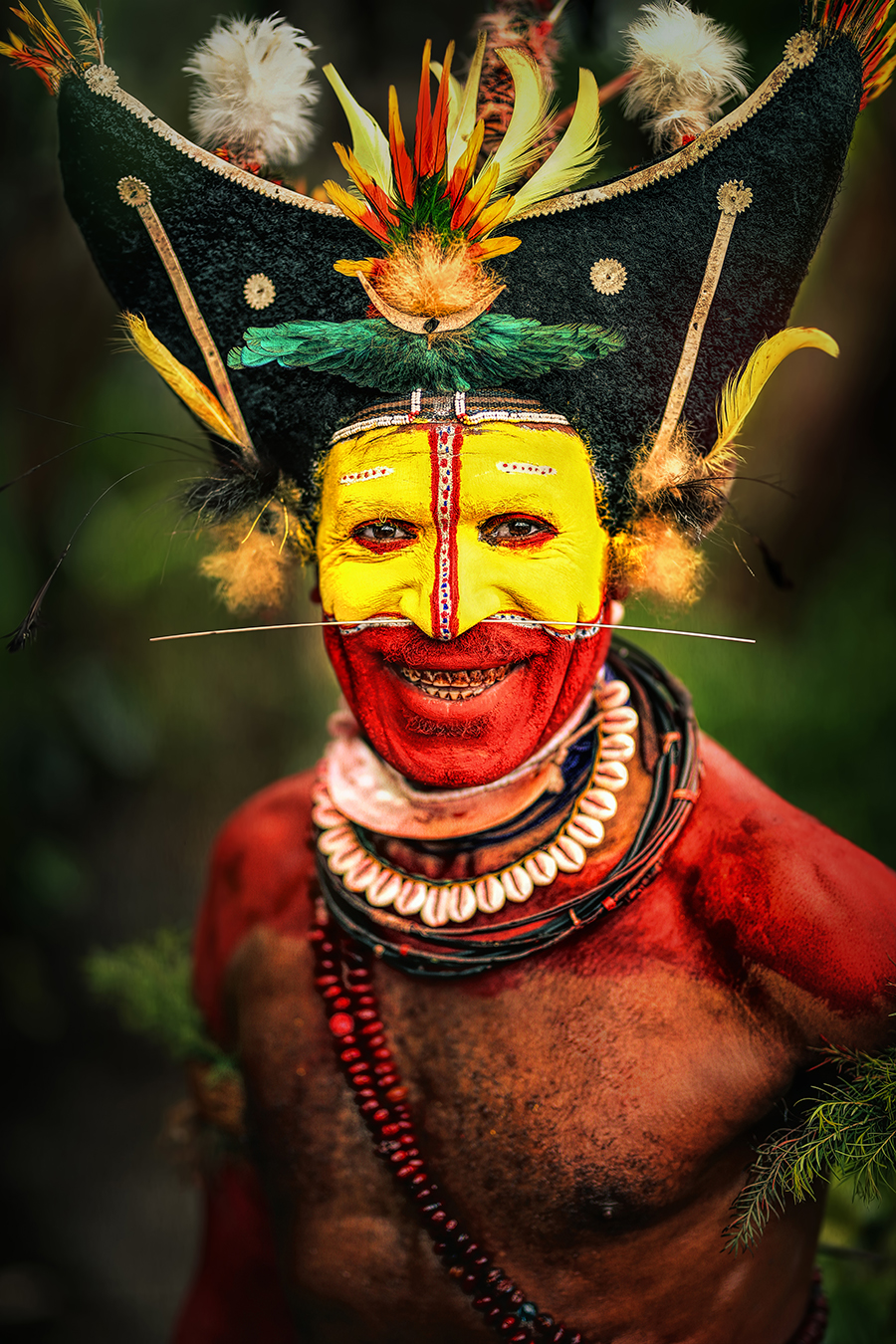
Photo/Alexander Khimushin
Progress for Indigenous Peoples at the International Level
Over the last forty years, Indigenous Peoples have achieved considerable progress regarding recognition of their rights in the international political arena and have created new spaces, in the form of legal provisions and institutional mechanisms, for the promotion and protection of their rights. Concrete outcomes of Indigenous Peoples’ struggle to gain recognition as subjects of international law have been the adoption of the UNDRIP (2007), the establishment of institutional mechanisms within the UN and regional human rights bodies dealing specifically with Indigenous Peoples’ rights, and, at the national level, the adoption of laws and policies for the protection of the rights of Indigenous Peoples.
Despite Progress, Challenges Remain
However, despite the progress achieved at the international level the situation of Indigenous Peoples at the country level remains alarming, and several critical trends are not only continuing, but have in fact worsened in many countries over the last decade, and have been magnified by the COVID-19 pandemic. Unfortunately, the reality today is that States rarely provide a systematic response to the recommendations made by international and regional human rights mechanisms, and that the recommendations made for more substantive reforms that will ensure the wellbeing of Indigenous Peoples on the ground tend to be ignored altogether. This is represented in Indigenous communities, where various reports and (the few available) statistics show that Indigenous Peoples remain among the poorest and most marginalized peoples in the world and that their individual and collective human rights continue to be grossly violated.
COVID-19 and looking forward: Building back better
Indigenous Peoples were not only disproportionately impacted by the effects of COVID-19 and its consequences; but also faced increased repression by states that used the pandemic as a way to enact laws that further encroach on their rights. They continued to experience injustice as large companies appeared to be allowed to freely continue their activities, encroaching on Indigenous lands, while restrictions on the Indigenous Peoples’ own movement and freedom to use and protect their lands was repressively enforced.
In this context and as national governments are focusing on building back their economies to address the damage of the global pandemic, many may opt for traditional ways of economic development with a focus on natural resources, large infrastructural projects, and extractive opportunities. Indigenous Peoples have long experienced threats to their lands, territories and natural resources from extractive industries and large industrial projects. A building back “better” economy that focuses on these sectors is again likely to have a disastrous impact on Indigenous Peoples and the systematic violation of their rights and livelihoods. Furthermore, it may jeopardize the international community’s aim to curb climate change.
Communalities and Alliances
While the situation varies considerably between regions and countries, Indigenous Peoples generally face the same types of problems, including: lack of recognition as collective rights holders; exclusion from decision-making processes; overall discrimination by the mainstream society; lack of tenure security and therefore loss of land and resources; gross human rights violations; lack of access to justice; lack of institutional capacities; gender and generational discrimination; and lack of freedom of expression and/or access to media. Indigenous Peoples and their organizations are building networks and alliances to meet these challenges, and to share their best practices.
Looking forward
It is obvious that considering the urgency and seriousness of the threats Indigenous Peoples are facing in many countries, a firmer and more decided plan of action from the international community is urgently needed. Much more effort must be put into addressing the persistent, and even widening, implementation gap between the good intentions expressed in legal and institutional frameworks and the effective protection of Indigenous Peoples’ human rights at the practical, everyday level.
Therefore, building back better initiatives need to take point of departure in the protection and respect of Indigenous Peoples’ rights and particularly the right to land, territories and natural resources, which are essential for their survival as distinct peoples.

Photo/Christoph Lingg
IWGIA & supporting this exhibition - Celebrating identity and self-determination
IWGIA chose to support the exhibit by photographers Alexander Khimushin and Christoph Lingg which highlights Indigenous Peoples from around the world. Although the portraits here are of unique individuals captured celebrating their external Indigenous identity, they represent something greater - the collective rights enshrined by international mechanisms including the UNDRIP and ILO 169.
International legal framework:
This exhibit builds on the rights recognized by the United Nations Declaration on the Rights of Indigenous Peoples and the ILO convention 169 among other international human rights agreements. The Exhibit was launched alongside the UNPFII’s 18th session on “Traditional knowledge: Generation, transmission and protection”.
These portraits highlight traditional patterns, outward expressions of identity and culture which are guaranteed in the Preamble, Articles 2, 3, 11, 12, 13, and 31 of the UNDRIP and in the ILO 169.
The captions provided with these photos represent the views of the author and/or the photographer, and not necessarily those of IWGIA itself. IWGIA can further-more not be held responsible for the accuracy of their content.
*IWGIA is a global human rights organization dedicated to promoting, protecting and defending Indigenous Peoples' rights. For 53 years IWGIA has documented and communicated Indigenous Peoples’ situations and the violations of their rights; empowered Indigenous Peoples through organizational support and projects on the ground and supported human rights institutions to advance Indigenous Peoples’ rights. IWGIA firmly believes in conducting advocacy with and in support of Indigenous Peoples towards key duty-bearers at international, regional and national levels around Indigenous Peoples, their rights, and their current situation in the world.
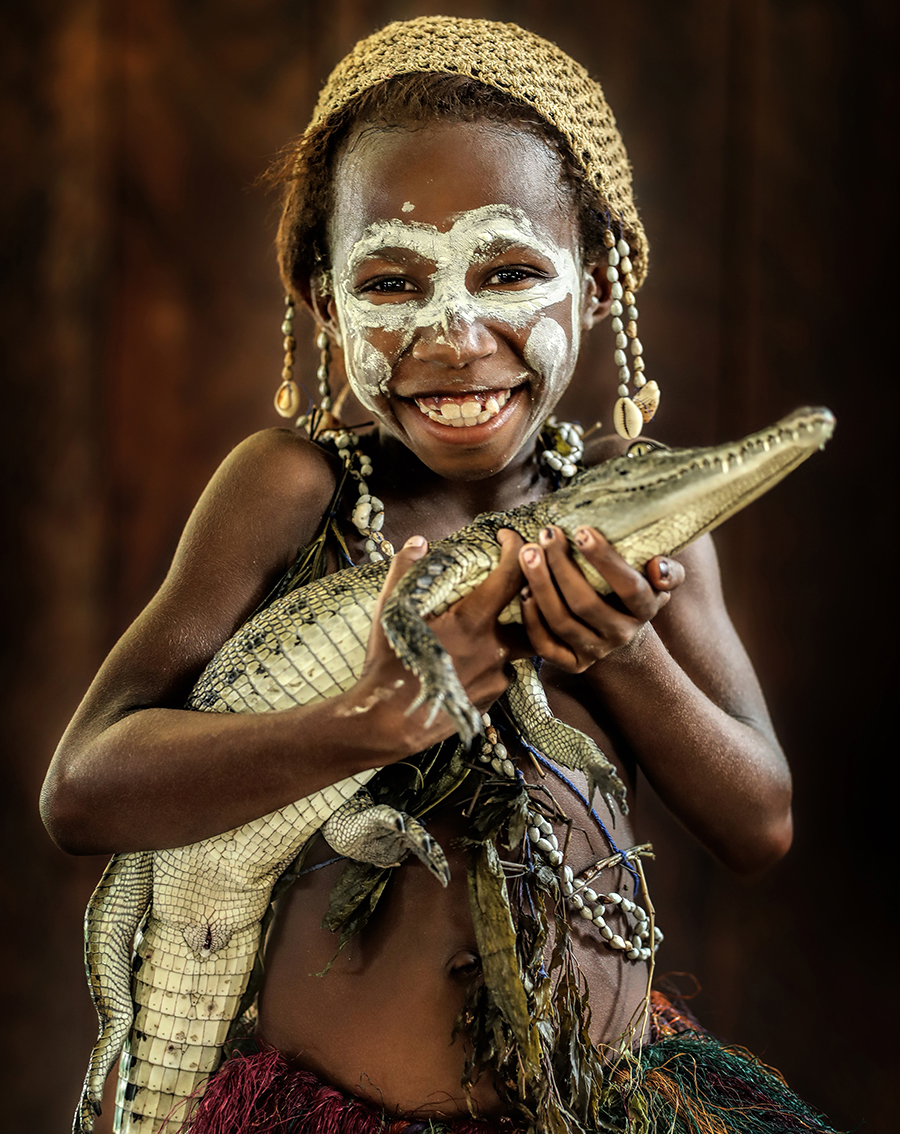
Sepik Papuan girl. Ambunti, East Sepik river, Papua New Guinea.
Diverse cultures of the world through the portraits of Indigenous Peoples
This exhibition honors Indigenous Peoples’ right to their cultures, identities and traditions, and their right to self-determination by determining their own policies and strategies with respect to their cultural heritage and traditional systems. These rights are enshrined in many of the articles of the United Nations Declaration on the Rights of Indigenous Peoples (UNDRIP), for example in the Preamble, Articles 2, 3, 11, 12, 13, and 31 of the UNDRIP and throughout the ILO C169.
The exhibition was designed and shown in 2019, during the United Nations Permanent Forum on Indigenous Issues, celebrating Indigenous Peoples' cultural diversity, which was one of the pillars of the UN’s International Year of Indigenous Languages. The exhibition is even more important today with the upcoming United Nations International Decade of Indigenous Languages (2022-2032). The term “Indigenous Peoples” is a common denominator for more than 476 million people, spread across more than 90 countries around the world who, through historical processes, have been denied their right to control their own development. As distinct peoples, they claim the right to self-determination, including the right to control their own political, social, economic and cultural development.
The exhibition showcases photographs that display the incredible diversity of Indigenous peoples’ cultures through portraits of individuals from different parts of the world in their traditional clothing and environment. As you look at these photos, we hope that you will see not only the individual, but the communities and the Indigenous Peoples they represent.
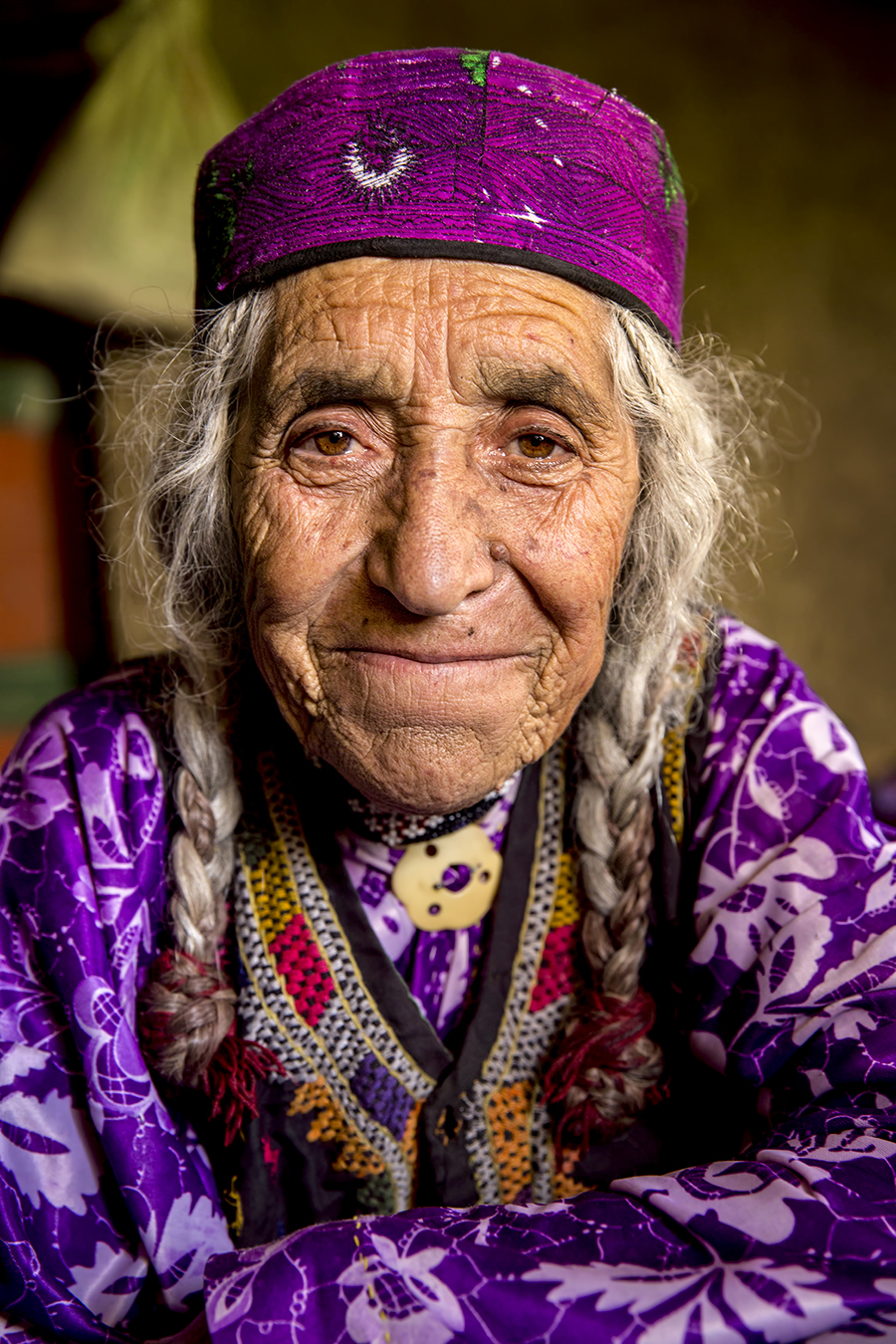
Khik woman
Wakhan Valley, Badakhshan, Afghanistan
Living in the valley between two of the world’s highest mountain ranges, the Khik people are practically cut off from the rest of the world. Donkeys are used as the main mode of transportation. Khiks are traditionally a nomadic people, depending on their herds of yaks for survival. However, now many of them have settled in clay houses along the river Panj, where they practice agriculture. Due to their extreme isolation their traditions and culture, including their everyday clothing, have remained intact.

Papuan girl
Massy, Western Highlands of Papua New Guinea
Laftadio Kupayna, along with a group of other children from Massy village, takes part in a big sing-sing ceremony on the day of this photo. Her mother applied the traditional paint on her face and dressed her in their traditional clothing. Only the Massy decorate themselves in this distinctive way. A sing-sing is a gathering of a few villages to peacefully share traditions. Each village has its own face-painting style and dance. It is a major annual celebration, although they are sometimes called for special events.

Bodi woman
Mago river, Debub Omo, Southern Nations Region, Ethiopia
Bodi people live in one of the most remote areas of South East Ethiopia along the Mago river. Bodi tribes are dependent on their livestock. There are more than 80 synonyms in their language describing their animals, differentiating them down to the smallest details in their color and physical appearance. Traditional foods consist of animal blood that is collected and stored and milk porridge. Scarification is widespread among both men and women and is intended to demonstrate both beauty and courage.

Ulchi girl
Amur river, Far East of Siberia, Russian Federation
In a school of her native Bulava village Anastasia Kuchekta, 8, learns her people’s language, dances and embroidery. She helps her mother engrave birch bark and process fish skin. The Ulchi are one of eight groups of Indigenous Peoples living along the 1,740 mile / 2,800 km long Amur river in the Far East of Siberia. Fishing is their primary livelihood. The Ulchi are a very small Indigenous group, living in just 2 villages, yet they have managed to preserve their traditions and national clothing. However the UN ranks the Ulchi language as critically endangered.
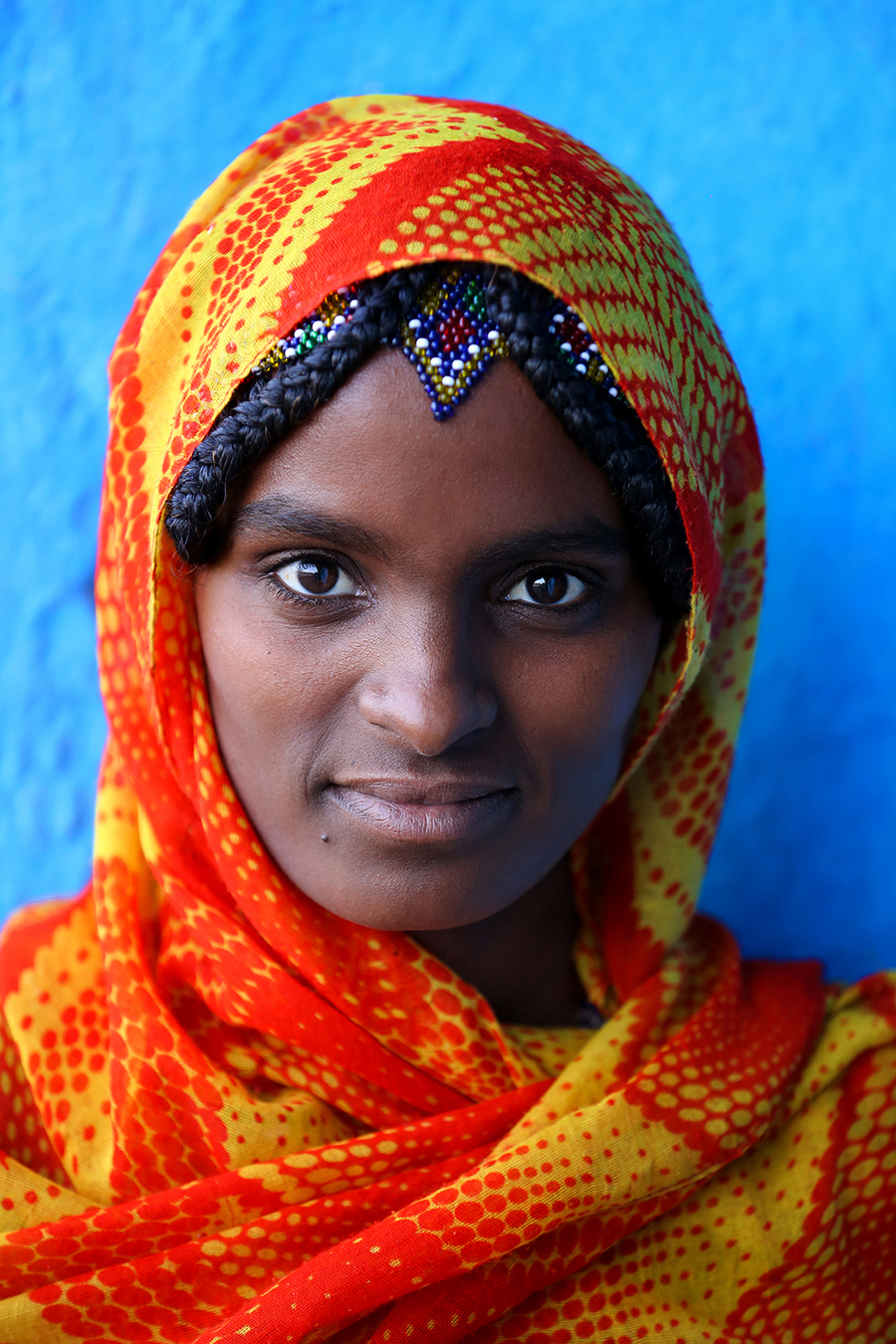
Afar woman
Danakil Depression, North-East Ethiopia
The Afar are Indigenous Peoples located in the Afar Triangle at the Horn of Africa. It is the lowest point of the continent, well below sea level. Affected by constant drought, it is also considered the hottest place on Earth. A skeleton found here in 1994 has been dated to 4.2 million years old. Paleontologists believe the Afar region is the cradle of humanity. The Afar people may well be the descendants of the first humans living on this planet.
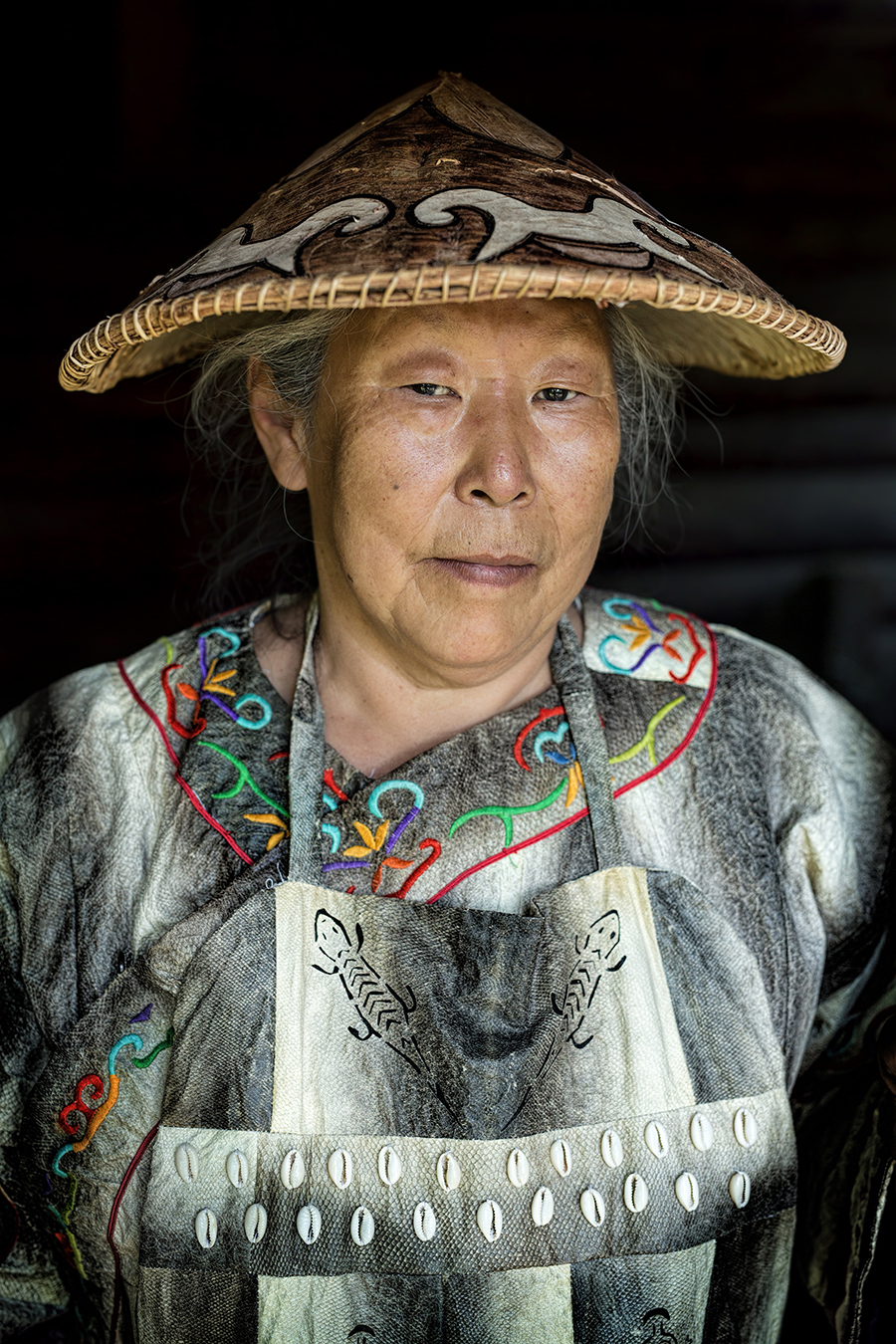
Orochi woman
Coast of the Sea of Japan, Far East Siberia, Russian Federation
The Orochi are an Indigenous people living on the shores of the Sea of Japan, Far East of Siberia, just north of Japan. Ina Akunka was a spiritual leader who dedicated her life to preserve Orochi traditions and culture. Here she is pictured wearing the last traditional clothing made from salmon skin by a traditional master craftsman. That master is no longer with us, and their traditional knowledge died with them. The last person who could speak the Orochi language died 11 years ago. Ina, 64, passed away in 2018. She was one of the last of the Orochi people.
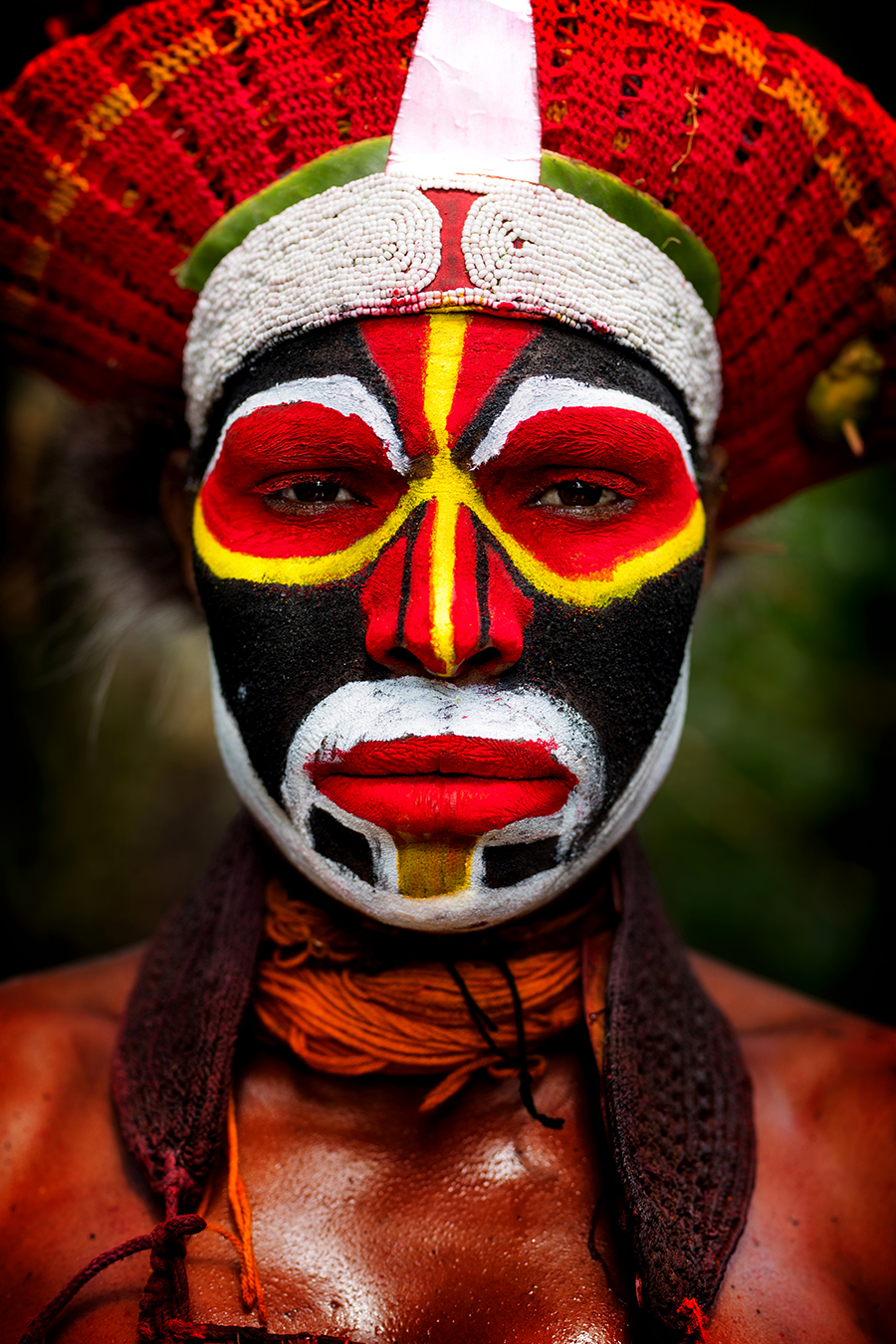
Papuan woman
Tambul, Eastern Highlands of Papua New Guinea
Kuku lives in Lagaim Village, Tambul District, in the Eastern Highlands province of Papua New Guinea. In this photo she has just applied her traditional make up made from local organic material. She is participating in a sing-sing, which is a gathering between a few villages, to peacefully exchange traditions. Each village has its own lineage, face-painting style and dance. A sing-sing is a big event celebrated once a year or on a special occasion. With over 800 Indigenous languages spoken in the country, there is an amazing diversity of people, culture, tradition and oral history. Only 18% of these groups live in urban areas.
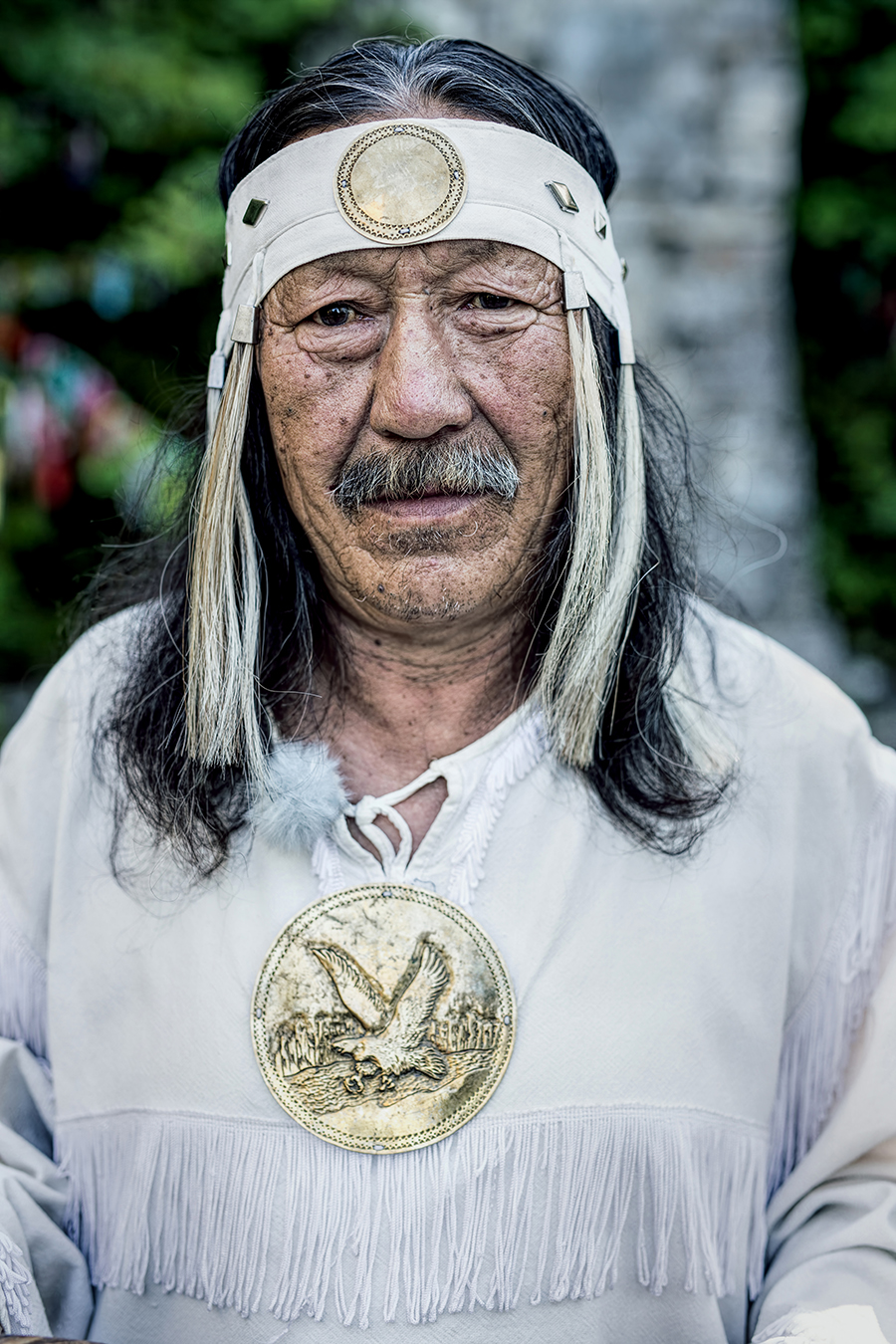
Sakha Shaman
Lena river, Sakha (Yakutia) Republic, North East Siberia, Russian Federation
The Sakha people live in the world’s coldest region with winter temperatures often dipping below -96F/-71C. They speak Sakha - a Turkic language, despite Turkey being more than 7,000 mi/11,300 km away from the Sakha Republic. There are less than 1 million people, spread across a region that is approximately ⅓ the size of the United States. Many Sakha people practice their traditional spiritual practices, including shamanism. Although the Sakha Republic has been considered a part of Russia since the 17th century, the Sakha people have preserved their culture and traditions. Approximately 87 percent of them are fluent in their native language.

Huli man
Tari, Hela Province, Papua New Guinea
The Huli people have many vibrant and unique traditions - one, the making of wigs using their own hair, is presented in this photo. When boys enter puberty, they live separately from the female members of their clan for about a year. During this initiation, young men live under the direct guidance of male elders, growing their hair and, at the end, get it cut by a traditional wig making master. The wigs, decorated with feathers, are later used for ceremonies throughout the man’s lifetime.

Nenets man
Tukhard, Taimyr Peninsula, Arctic Siberia, Russian Federation
Pavel Nikiforoff, 36, has a lot of responsibilities - he is the head of the administration of one of the most remote and northernmost settlements of Eurasia and of the world - the village of Tukhard. Until recently, Pavel had a herd of reindeer, but when the local residents elected him as a village Chief, he had to make a difficult choice. Leadership is a huge responsibility. Life in tundra is harsh, with temperatures below -40 F/ -40 C, but for Pavel it is his homeland, and his people's land. He doesn't dream of any other life.
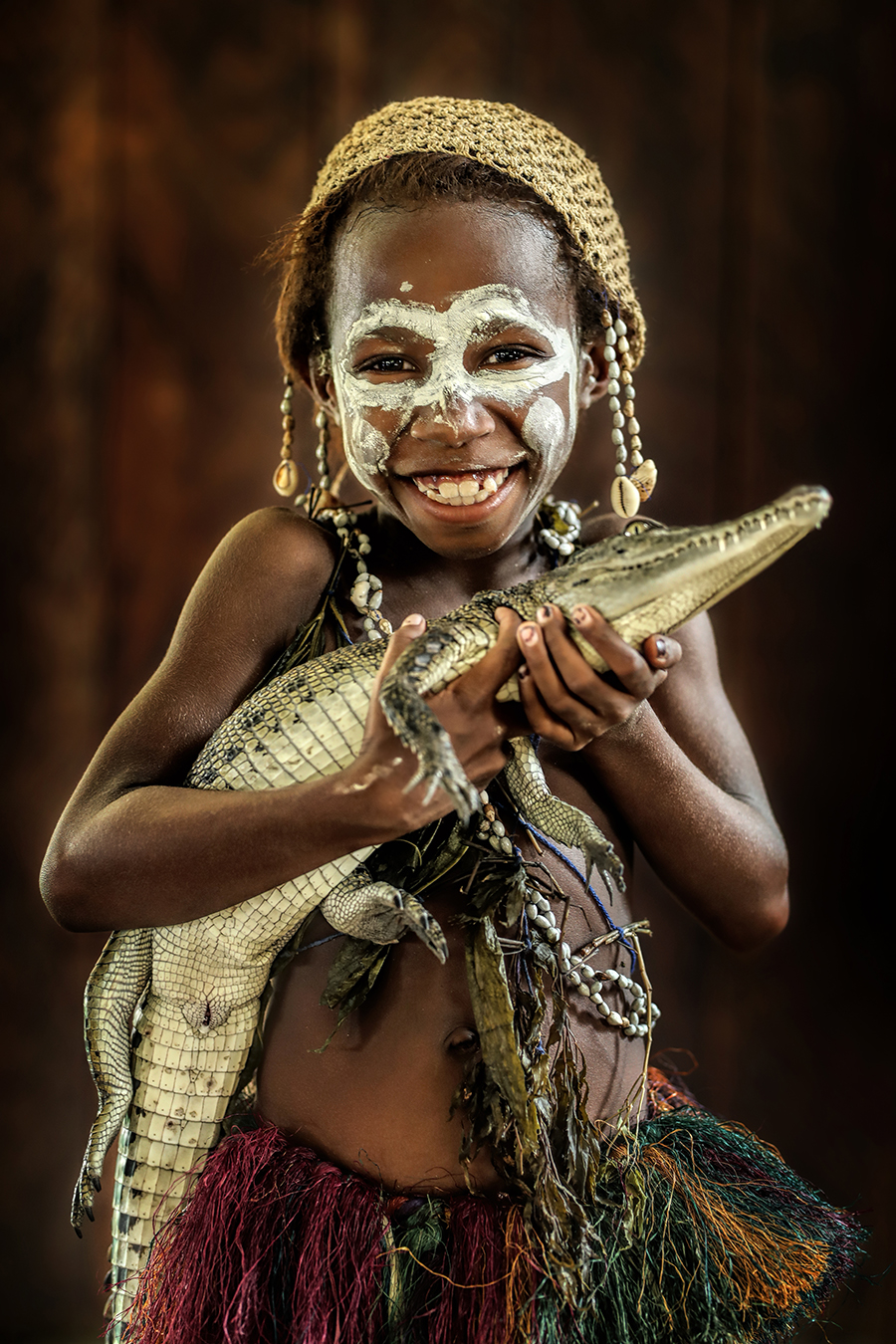
Sepik Papuan girl
Ambunti, East Sepik river, Papua New Guinea
The East Sepik river serves as the only ‘road’ into many Sepik villages, with little to no infrastructure, including electricity, shops or other amenities. This isolation has helped preserve the East Sepik culture for generations. However, there are fears that their remote paradise will soon be destroyed by mining. There are development plans to introduce a new gold and copper mine along the East Sepik. It is estimated that this area is one of the largest undeveloped copper-gold deposits in the world, but the risk of ecological catastrophe as a result of its exploitation may outweigh the possible benefits to the East Sepik peoples.

Ixil girl
Santa Maria Nebaj, El Quiché, Guatemala
Joselin Pamela Valdez and her family live in the Cuchumatan mountains of the Guatemalan Highlands. Due to its remoteness, the Ixil Community has largely maintained its traditional culture. Most women are weavers making the handmade traditional clothing that the Ixil women proudly wear in everyday life. Ixil are among the Indigenous Peoples who suffered horrific atrocities during the 36-year Guatemalan civil war which ended in 1996. In 2012 Rios Montt, ex-president of Guatemala, was found guilty of the massacre of 1,771 Ixil People, however, after an appeal which dismissed the conviction and before the second trial’s final verdict, he died in 2018.
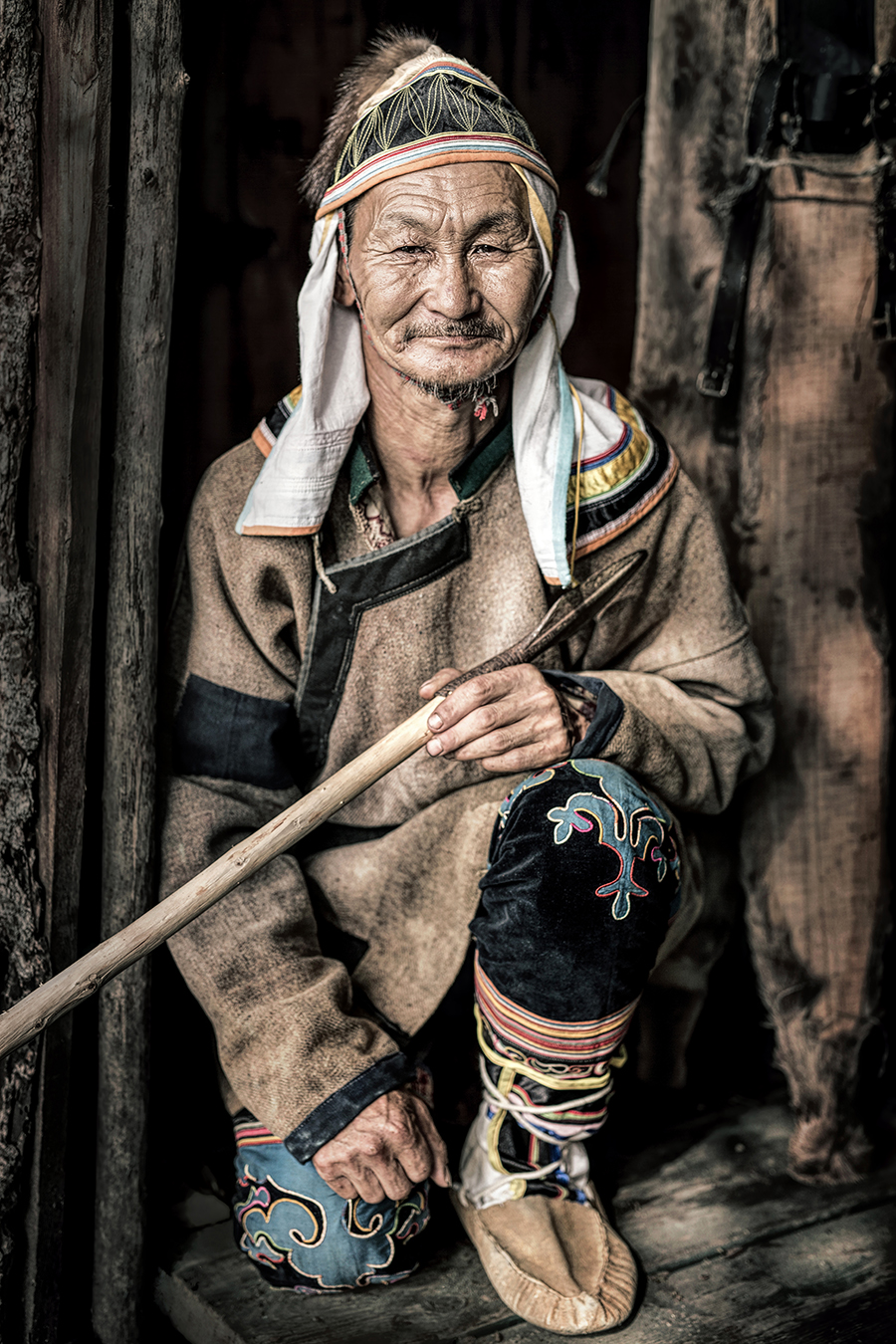
Udege man
Krasny Yar, Primorie, Far East of Siberia, Russian Federation
Every summer Sergey Sulyandziga, 56, along with other Udege people go hunting for ginseng root. The Udege know how to find it. Ginseng is highly regarded in Chinese medicine, and can be found in the lush Bikin taiga known as the ‘Russian Amazon’. Sergey is a hunter, searching for roe deer and wild boar. Sergey shared memories from his youth, of how a tiger wandered out of the taiga and climbed the fence to rest in Sergeys backyard. Ussuri tigers are sacred for the Udege people, and must be left alone. There are just over 100 speakers of the critically endangered Udege language.

Mongolian Kazakh man
Targyn, Bayan-Ölgii, Western Mongolia
Sailau Jaryk, 68, is a berkuchi - an eagle hunter. He has practiced his traditional hunting with a berkut bird for the last 40 years. He hunts on average 3 days a week. Over the last 40 years, Sailau has had 9 birds. While on average a Mongolian golden eagle’s lifespan is about 25 years, Sailau has never kept a bird for more than 8. He believes they must also live free, and always releases his eagle after the time they hunt together. This is his peoples' tradition. While the Kazakh language is widely spoken in neighbouring Kazakhstan, the ancient tradition of eagle hunting is endangered. It only exists today among this small community of Mongolian Kazakhs.

Aboriginal man
Pormpuraaw, Gulf of Carpentaria, Cape York, Australia
Cape York Peninsula is one of a few remaining places in the country with a significant population of Australian Aboriginals. When the first British settlers arrived, Australia had been inhabited by Aboriginals for more than 50 thousand years. 231 years later, although the population of Australia is over 24 million, only 2.8% of them are Indigenous.

Hamar woman
Turmi, Debub Omo, South West Ethiopia
A married Hamar woman (which is indicated by her top necklace) is pictured here during her visit to a weekly market at Turmi village to exchange local produce. The Hamar people are pastoralists, primarily dependent on their livestock (cattle). They celebrate a rich culture and traditions which focus on cattle. There are approximately 42,838 Hamar language speakers, and 42,448 self-identified Hamar people. They represent approximately 0.05% of Ethiopia’s population.
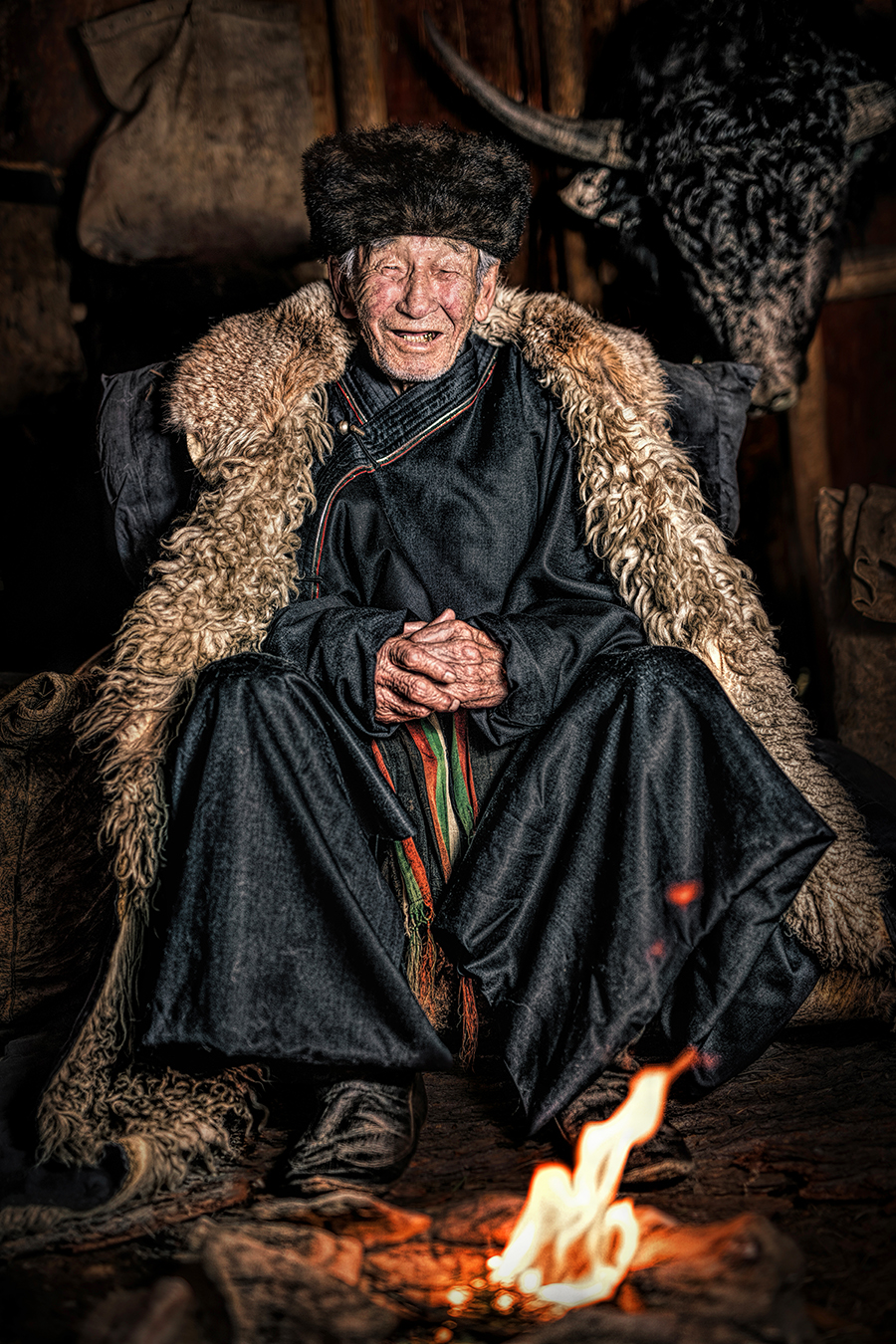
Soyot man
Oka river, Buryatia Republic, South East Siberia, Russian Federation
Soyot people live in one of the most remote areas along the Russia/Mongolia border, hunting, fishing and grazing their yaks. There are just a couple of dozen people whose parents are both Soyot. Soyot identity is contested due to intermarriages with Buryat people. The Soyot language is extinct and very little of their culture remains today. This is Vladimir Rabdanovich Baldanov, 81, one of the last Soyots in the world.

Buryat woman
Baikal lake, Buryatia Republic, South East Siberia, Russian Federation
The Buryats are the largest indigenous group in Siberia, mainly concentrated in their homeland, the Buryat Republic. They also live in Mongolia and China, where they are an ethnic minority. Even though the total population of Buryats is close to half a million people, they comprise only about 26% of the population in their own republic. Only approximately half of them can speak the Buryat language today. UNESCO recognized their language as severely endangered.

Even girl
Sakha (Yakutia) Republic, North East Siberia, Russian Federation
Evens are a Siberian Indigenous people of Manchu-Tungus origin. Evens have a rich oral history, and have been living in this part of the world since the 1st millenium AD. Their language is spoken by communities of reindeer herders, scattered for thousands miles across the coldest and most isolated regions of Siberia. With only some 5,700 speakers the Even language is considered severely endangered.

Yukaghir man
Kolyma River, Sakha Republic, North East Siberia, Russian Federation
Makar Kurilov, 60, lives in one of the coldest and most remote areas of the world. He is a hereditary reindeer herder from along the Kolyma river in north eastern Siberia. Now retired, he composes and sings songs in the Yukaghir language and teaches children Yukaghir songs and dances. There are only approximately 1,500 Yukaghir people. Only around 70 of them claim fluency in their traditional language and it is considered critically endangered by UNESCO.

Tz'utujil woman
Lake Atitlán, Guatemalan Highlands, Guatemala
Tz'utujil are one of the Maya Indigenous groups in the Americas. They are noted for their continuing adherence to traditional cultural and religious practices through their arts and crafts. Tz'utujil artisans are globally recognized for their traditional dyeing of thread from plants that are grown locally. Tz’utujil women present their unique style and identity through their clothing. A distinctive headdress is a common identifier of the Tz'utujil people.
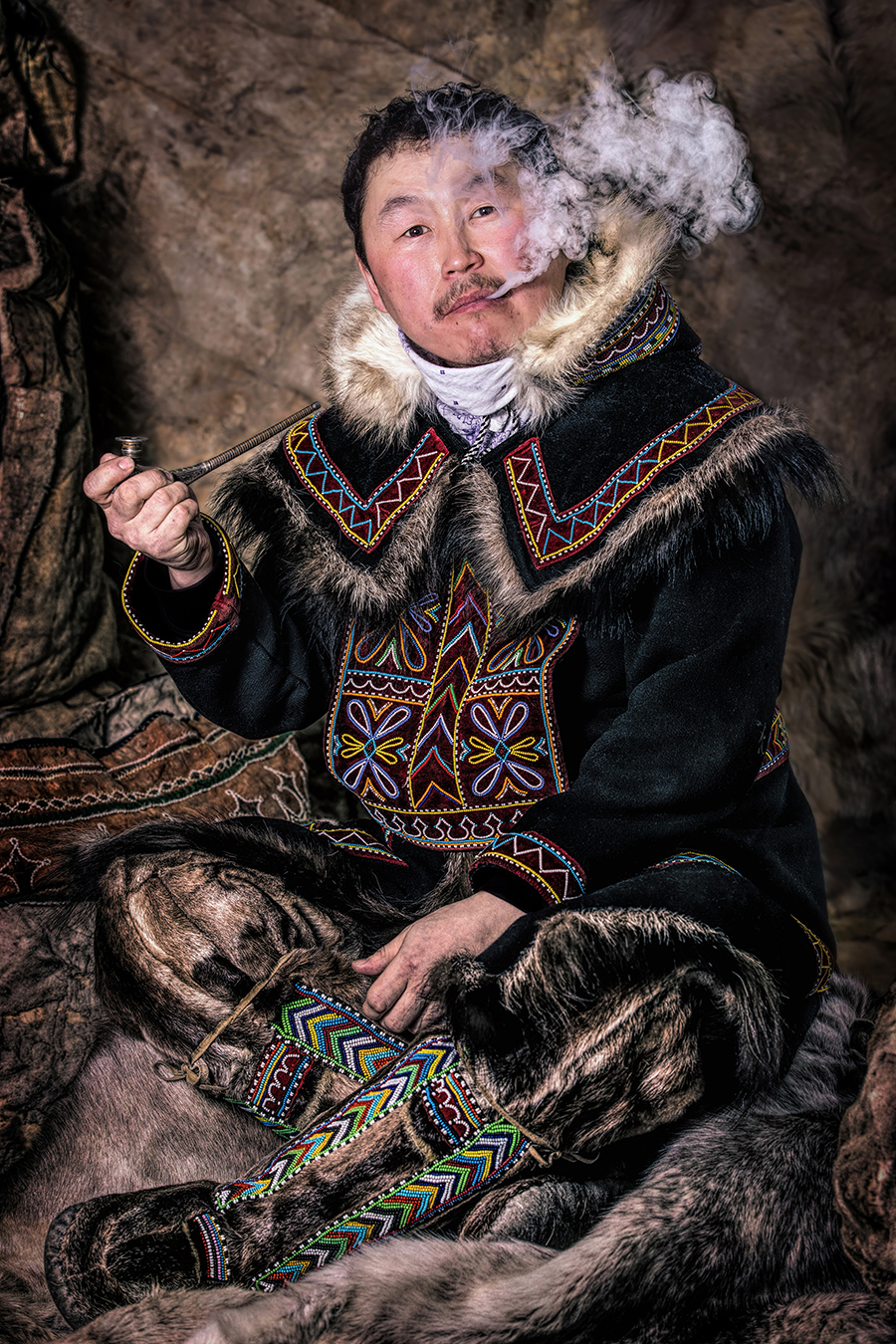
Dolgan man
Dudinka, Taimyr Peninsula, Arctic Siberia, Russian Federation
Dolgan people are the Northernmost people of Eurasia, living on the edge of the Arctic Ocean. Dima Chuprin, 35, is a highly regarded traditional bone carver, working with both mammoth and reindeer bone. Dolgans are reindeer herders living an isolated life in one of the harshest climates on earth. An estimated 1,000 Dolgans of the approximately 8,000 remaining speak their language.
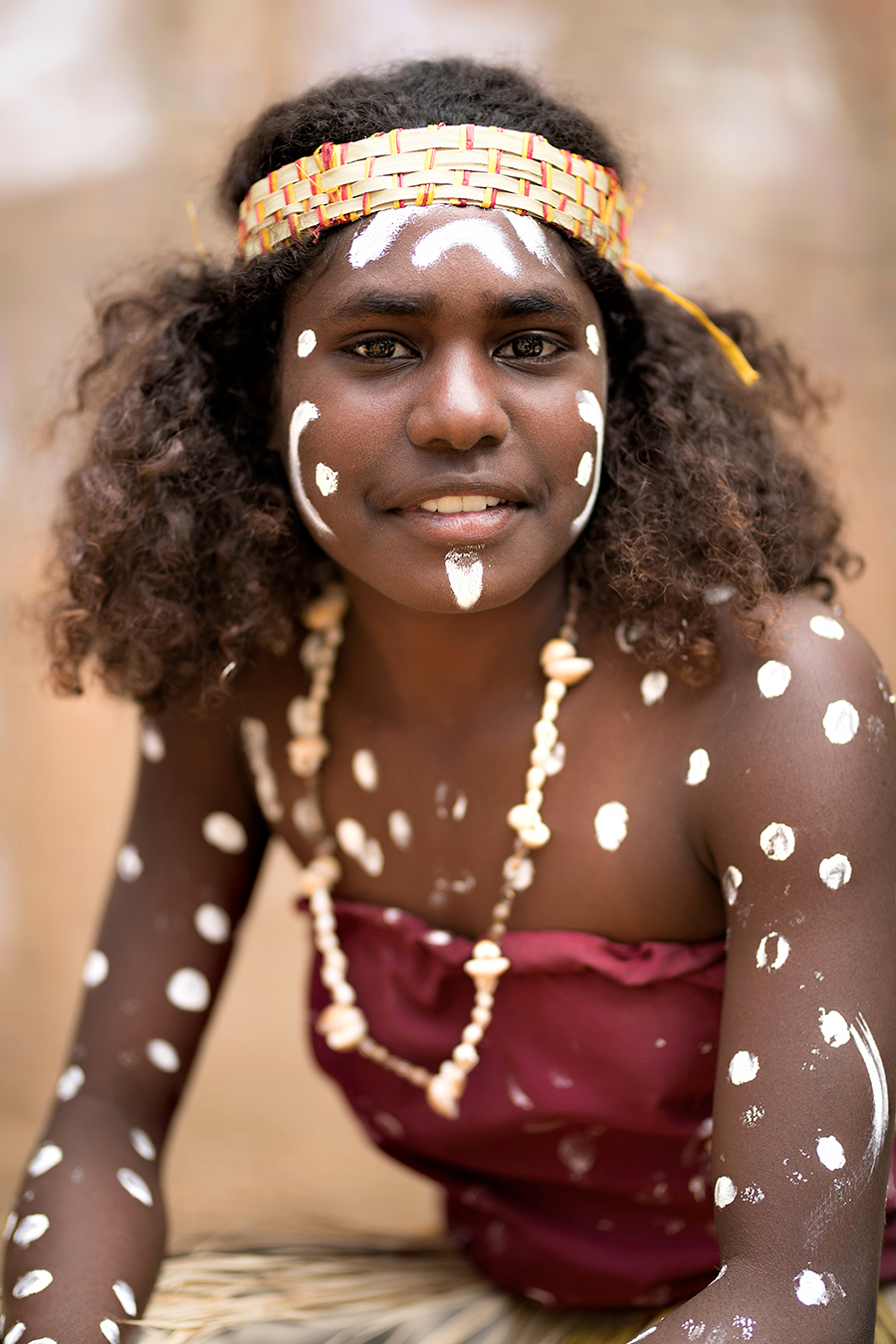
Aboriginal woman
Lockhart River, Cape York, Queensland, Australia
During the period of 1905-1969 Australian government authorities and the police were given power to transfer Aboriginal children to foster care, forcibly removing them from their families. The children who were taken were assimilated to Anglo-Australian culture. It is estimated that about 100,000 children in total, or just about every third Aboriginal person at that time, was forcibly removed from their families.
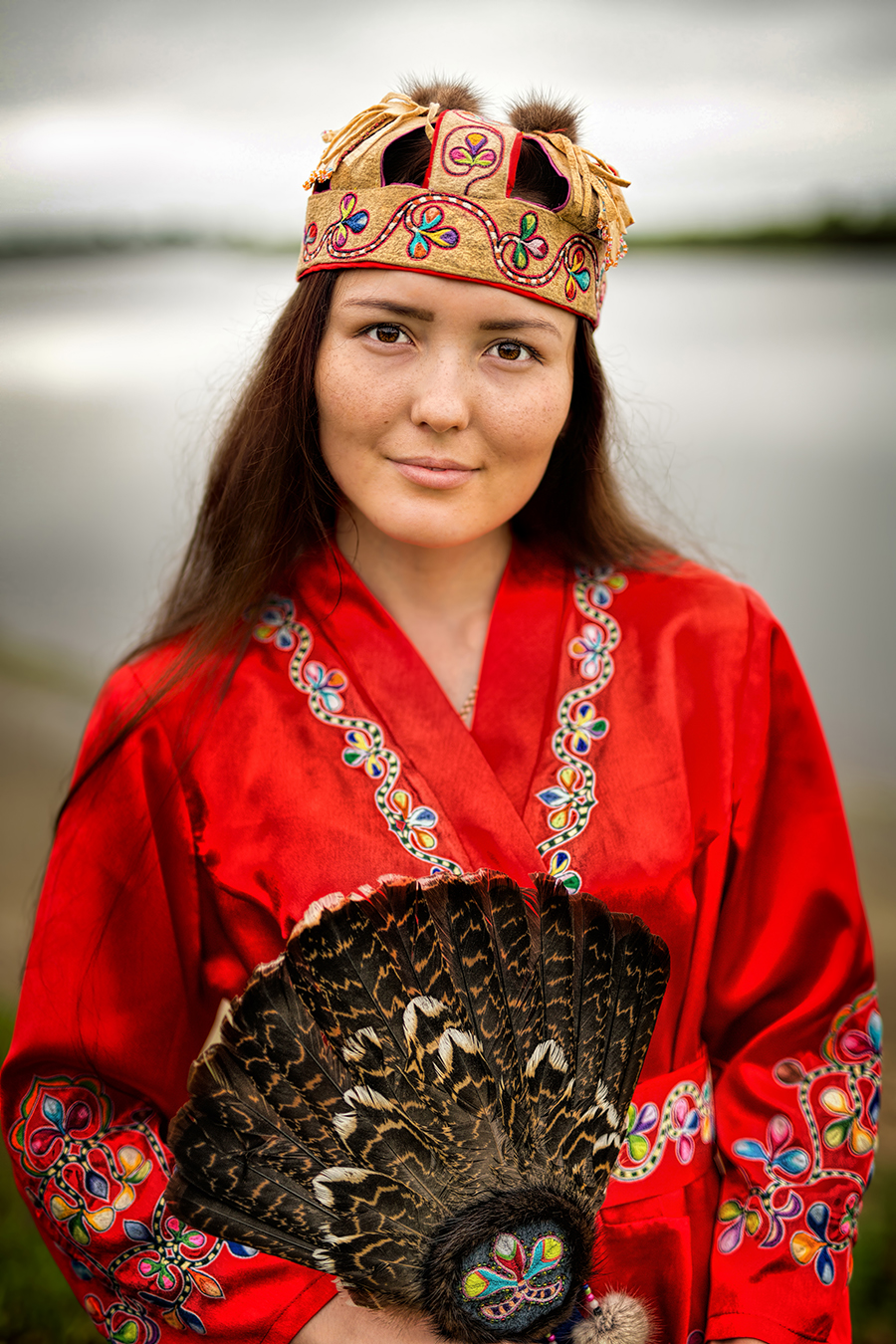
Negidal woman
Amgun river, Far East of Siberia, Russian Federation
Negidal people live in a remote village on the Amgun river, accessible only by boat and surrounded by hundreds of miles of dense taiga forest. The art of making traditional clothing like these in the photo has been lost. The Negidal language today is only spoken by two local elderly women. They fear the language, identified as critically endangered by UNESCO, and the core traditions and culture of the Negidal will die with them.

Dukha woman
Darkhad Valley, Khovsgol, Northern Mongolia
The Dukha people live in one of the most remote and inaccessible Mongolian taiga forests bordering the Tyva Republic in Siberia. They are the only Indigenous reindeer herders of Mongolia. Ulzii Sandag, 80, is one of only 282 Dukha people. If we count her 14 children, more than 60 grandchildren and a large number of great grandchildren, the total number of which she could not recall, it can be said that Ulzii is the progenitor of more than half of the Dukha people. In Ulzii’s opinion the most important trait of a human character is humanity, "I wish all people of the world to live in peace and harmony!"

Nganasan boy
Dudinka, Taimyr Peninsula, Arctic Siberia, Russian Federation
The Nganasan people of the Siberian Arctic are the northernmost people of Eurasia. There are just a few hundred Nganasans today. Their language is severely endangered according to UNESCO. There are only a few elders who can speak Nganasan fluently. Here a local boy, Venya, 15, is wearing authentic traditional clothes. These clothes are becoming exceptionally rare. The few remaining pieces like this one will be buried together with their owners, according to the Nganasan ancient funeral traditions. Once these are gone, there will be just a couple of costumes left as museum pieces.

Kaqchikel man
Los Encuentros, Solola, Guatemala
One of key members of a cofradia - a unique form of brotherhood that is common throughout the region among the Maya Peoples. The process of becoming a member of a cofradia involves many steps and has traditionally been a way for a person to demonstrate their worth to the community. The Kaqchikel Maya are one of the 30 ethnic groups of Maya Peoples, 21 of whom live in Guatemala.

Karo woman
Omo River, South West Ethiopia
The Karo people live on the banks of the Omo River. A deadly scourge of sleeping sickness drastically reduced their population at the end of the 19th century. Now numbering just over 1,500 people, they live in just two villages. The Karo predominantly practice flood cultivation, growing sorghum, maize, and beans. They also fish and breed cattle and goats. The Karo language is critically endangered.
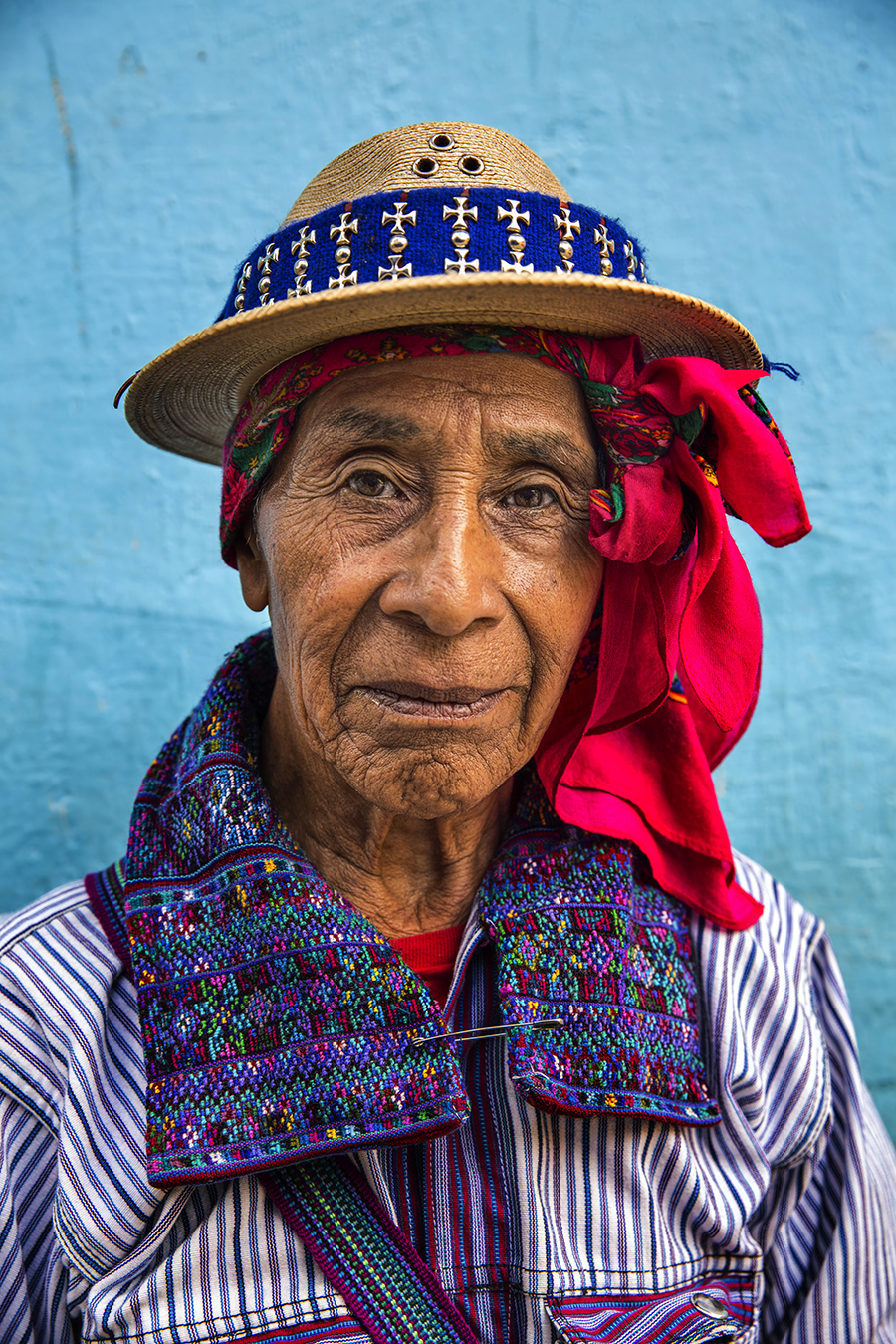
Mam man
Todos Santos, Huehuetenango, Guatemala
The Indigenous Peoples of Guatemala celebrate their unique embroidery style and color scheme, especially in women’s clothing. For the Mam, men also have their own style expressing their culture and identity. This clothing isn't costume for a special occasion, most Mam men in the Todos Santos Cuchumatan area wear the same hat and jacket on a daily basis.
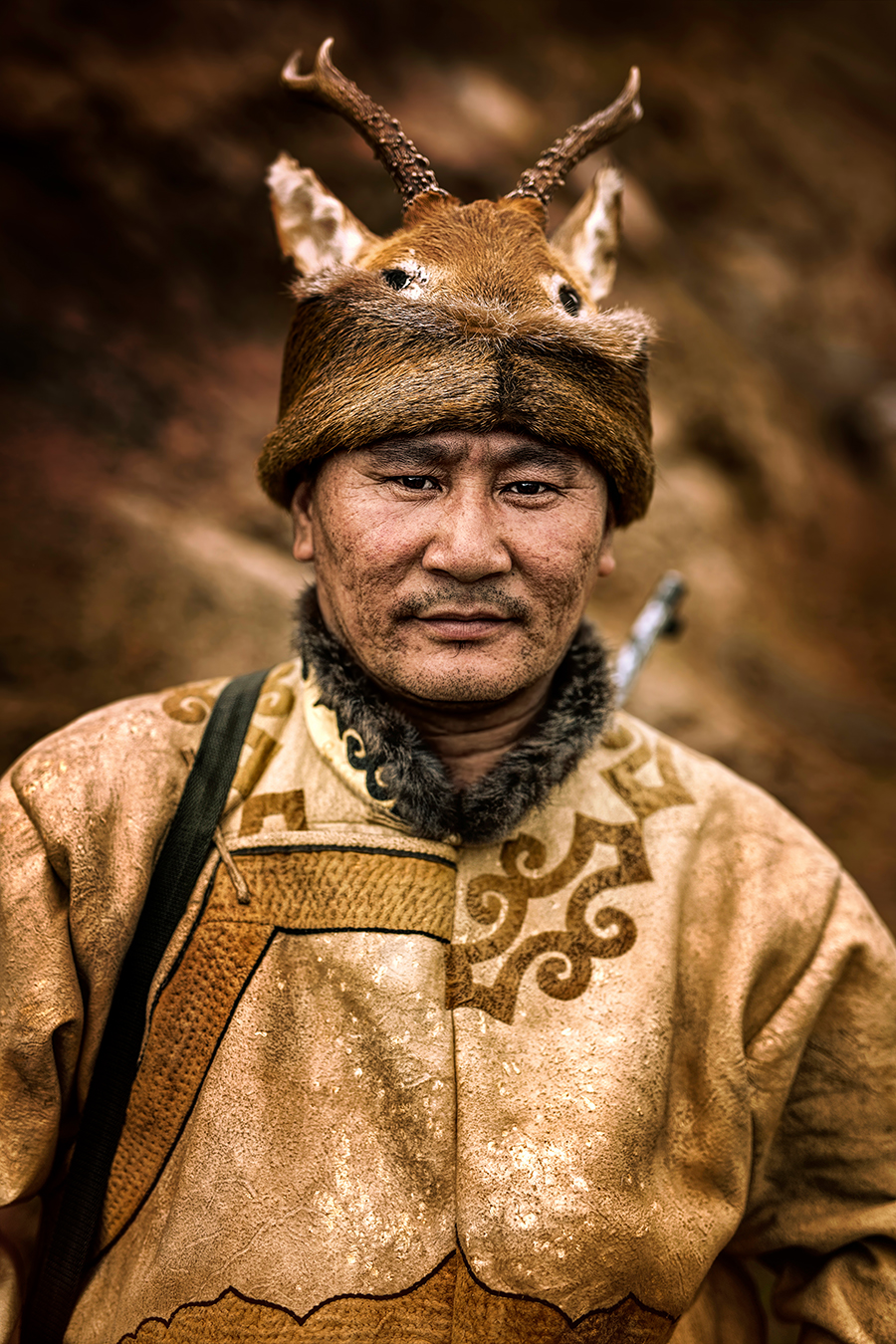
Oroqen man
Alihe, Inner Mongolia province, People’s Republic of China
The Oroqen people live in a remote part of the Inner Mongolia Province in China, along the border with Siberia. The Oroqen language is not written until now; it is considered severely endangered. Traditionally Oroqens are hunters, however most of them have transitioned to other occupations to adhere to the new wildlife protection laws passed in China. The government has provided support and modern dwellings for those who are integrating and have left behind their traditional way of life.
About the photographer
Born in Siberia, Alexander Khimushin is an Australian based photographer. He has dedicated the last several years to working on The World In Faces photo project. This project visits remote communities of Indigenous Peoples around the world. Documenting these Indigenous Peoples and sharing their traditions and culture to the world through photography is Alexander’s passion. The series has been featured in the media in more than 60 countries (National Geographic, Conde Nast, GEO, Daily Mail, Telegraph, Spiegel, CNN, Arab News, RT etc.) creating greater exposure and dialogue around Indigenous rights and Peoples. In 2018 Alexander, by invitation of the Office of the UN High Commissioner for Human Rights, created an artwork for the #StandUpForHumanRights campaign celebrating the 70th Anniversary of the Declaration of Human Rights.
By the world forgot
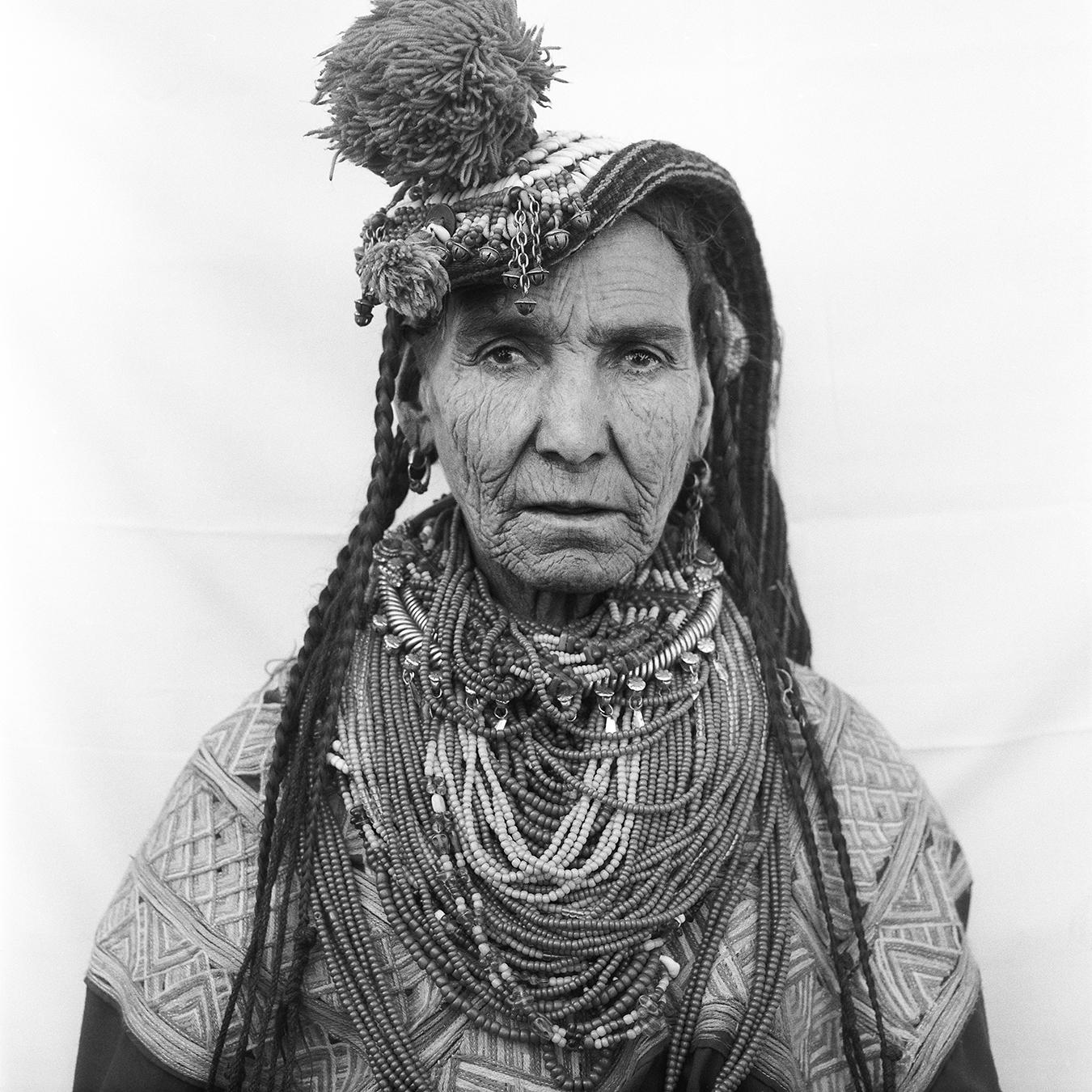
Kalasha Woman
Chitral district, North-West Pakistan
The Kalasha are a small Indigenous group that live in three valleys of the Chitral district. The Kalasha are polytheistic and continue to worship a God creator, Dezau, as well as several other local deities. They base their subsistence on agriculture and goat herding. While Kalasha men today dress like ordinary Pakistanis, Kalasha women take pride in their traditional dress, their many multi coloured strings of beads, and their ornamental headdress. Their long hair, which they order in braids, is thus only partly covered.
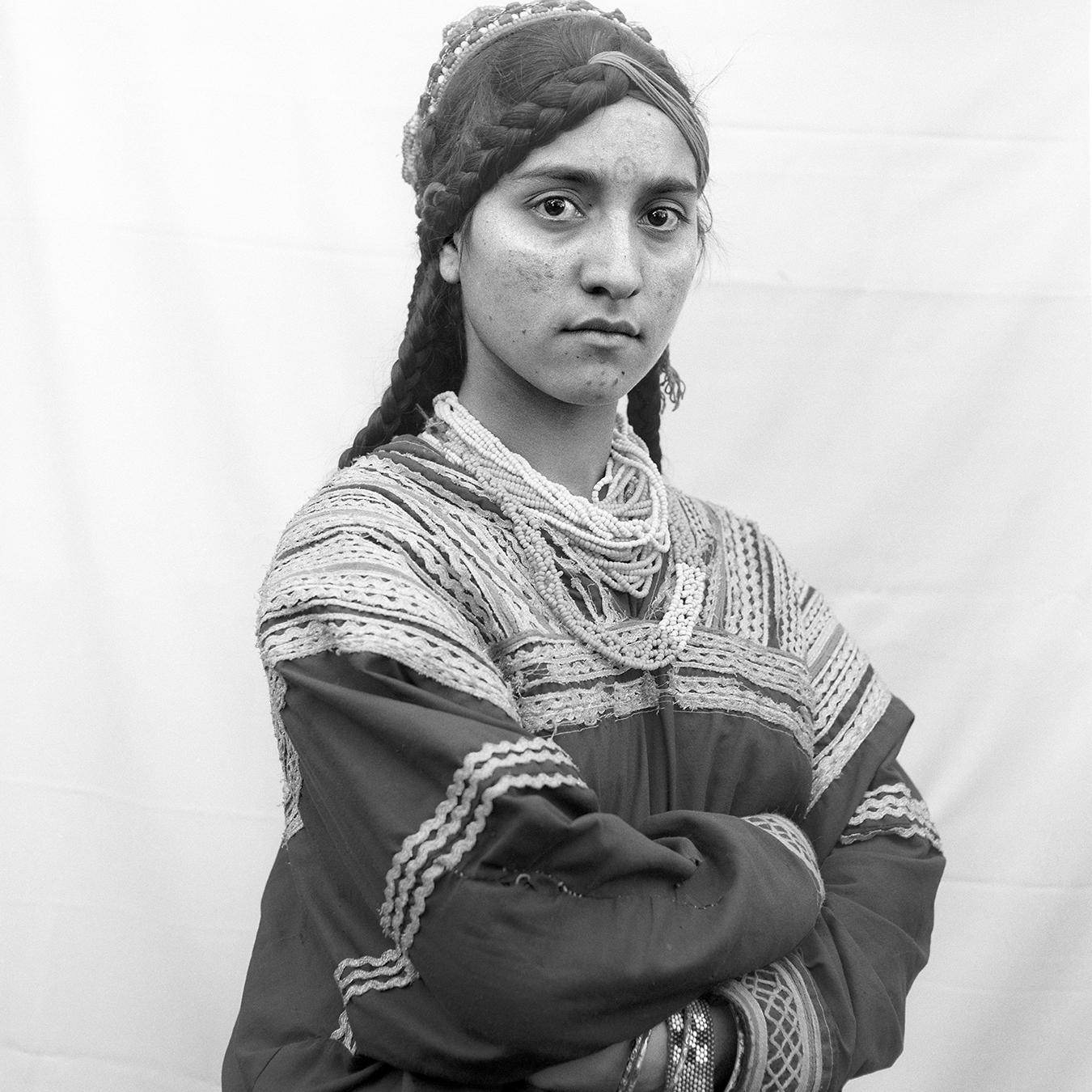
Young Kalash woman
Chitral district, North-West Pakistan
The Kalasha’s social system is based on patrilineal clans that are strictly exogamous. Most women therefore marry out of the village and go to live in their husband’s village. Kalasha women are free to go and visit their families and travel is rarely restricted. More importantly, they can also make choices that determine their own lives, as, for instance, eloping instead of marrying the man chosen by their parents. No value is placed on female virginity and no stigma on divorces. The children of a divorced woman will remain with their father, but the woman may visit them.

Kalasha boy
Chitral district, North-West Pakistan
Kalasha children face an uncertain future as the Kalasha’s traditional life is undergoing profound changes. Land has become scarce and land holdings more and more fragmented due to inheritance rules. The Kalasha are now increasingly becoming integrated in a cash economy and many families have been compelled to sell their land, losing their self-sufficiency. Although standards of living have improved, nutrition and health remain poor and the infant death rate high.
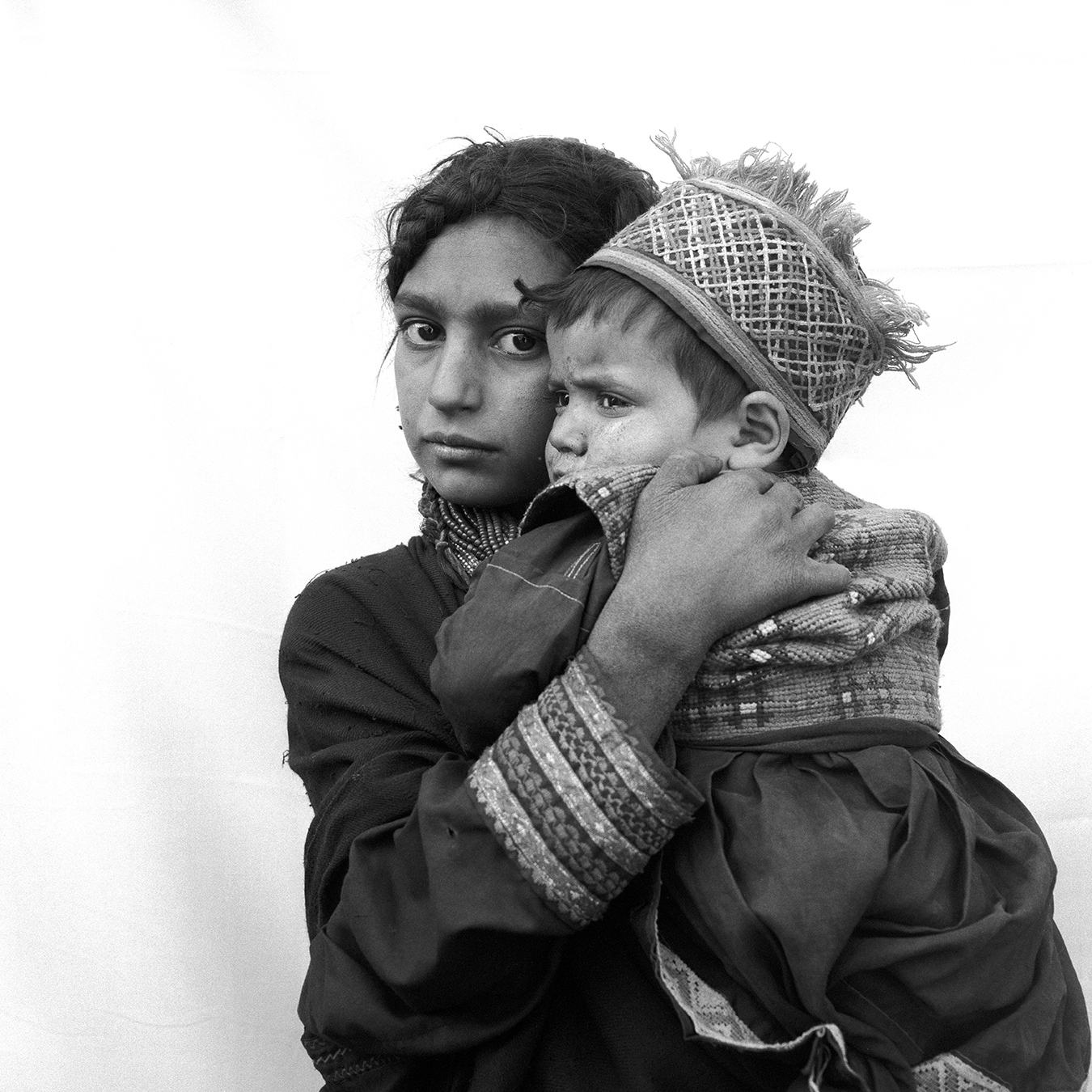
Kalasha Woman and Child
Chitral district, North-West Pakistan
Kalasha children face an uncertain future as the Kalasha’s traditional life is undergoing profound changes. Land has become scarce and land holdings more and more fragmented due to inheritance rules. The Kalasha are now increasingly becoming integrated in a cash economy and many families have been compelled to sell their land, losing their self-sufficiency. Although standards of living have improved, nutrition and health remain poor and the infant death rate high.
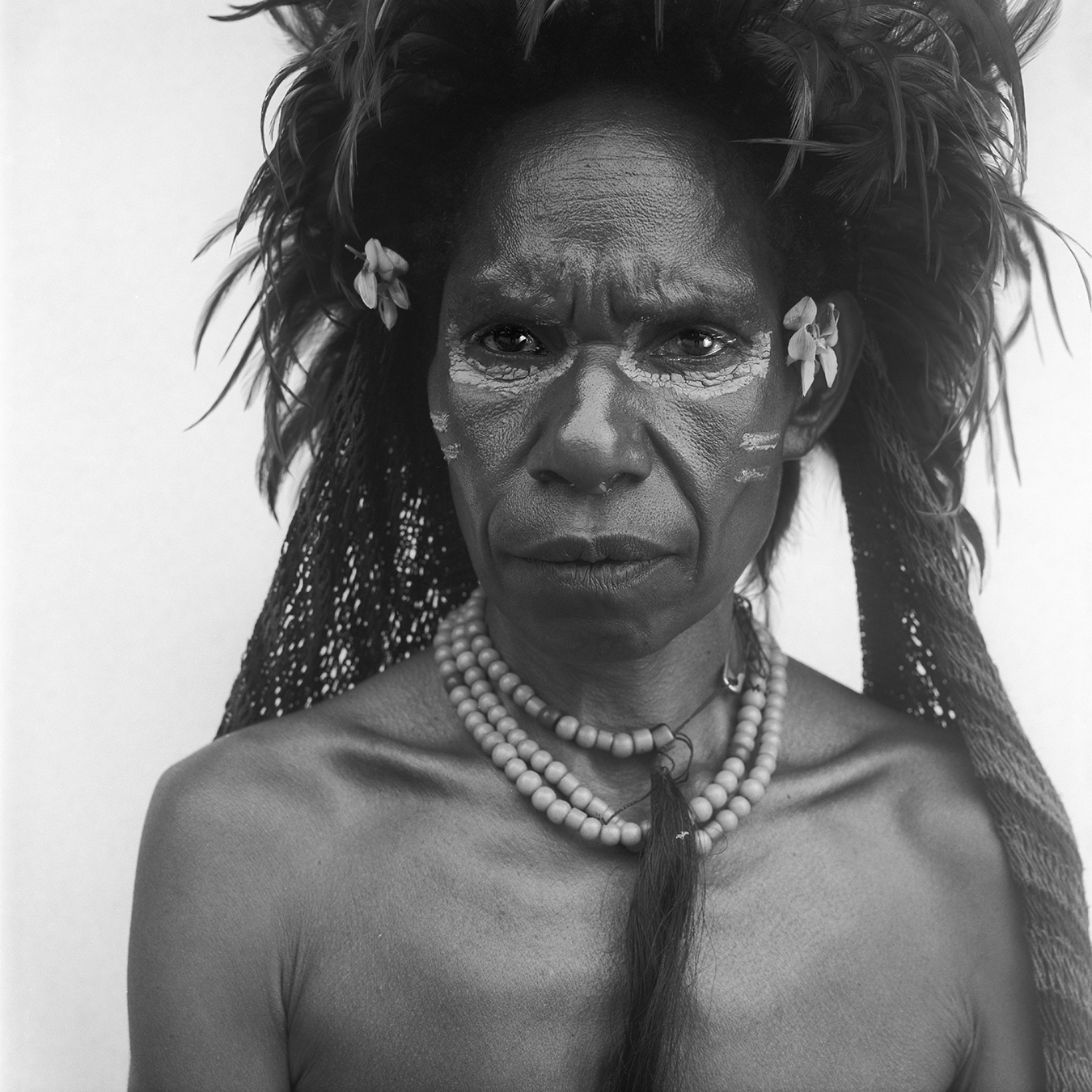
Dani Woman
Papua province, Indonesia
Traditionally, Dani women wore only an empowered necklace and one or several string bags (nokin) hanging down their back from a strap over their forehead. The Dani along with their fellow Indigenous Papuans have always advocated their right to self-determination and resisted Indonesia’s integration policy. The introduction of a Special Autonomy Law for West Papua (2001) and Indonesia’s adoption of the UN declaration on the Rights of Indigenous Peoples (2007) raised hopes for more self-government and improvements of the human rights situation. These hopes have not yet materialized.

Dani Man
Papua province, Indonesia
The Dani are the largest group among West Papua’s 250 Indigenous Papuan Peoples. They live in the Baliem River Valley in the central highlands of Papua province. Traditionally, Dani men only wore a gourd (holim) to cover their penis and kept their hair long and greased with pig fat and soot. For ceremonies they adorned themselves with feathers, pig-tusks, shells and body paint. As the result of pressure from missionaries and religious strictures tied to conversion and physical harassment by the Indonesian army, men now cut their hair and use second-hand western-style clothes. Holims may still be worn in remote villages and for tourist purposes.

Two Hani Women
Yunnan province, People’s Republic of China
The Hani (or Akha) live in the southeastern part of Yunnan province, in the mountainous region between the Honghe Jiang (Red River) and the Mekong River. Over the last 1,300 years they have transformed the steep mountain slopes of their homeland into vast irrigated terrace landscapes. The Hani have a profound knowledge and understanding of their environment. Today, the Hani are a recognized minority (minzu) and benefit from the Chinese government’s affirmative action policy.

Hani woman
Yunnan province, People’s Republic of China
The Hani are traditionally semi-nomadic slash-and-burn agriculturalists. Caretakers of the steep mountain slopes of their region, the Hani have developed many protective rules and institutions linked to water conservation, soil management, and fire control. The introduction of cash crops like tea and rubber has negatively impacted the region’s environmental biodiversity, disrupting functional links between livelihoods, biodiversity and culture. It has also led to the gradual integration of the Hani into the market economy.
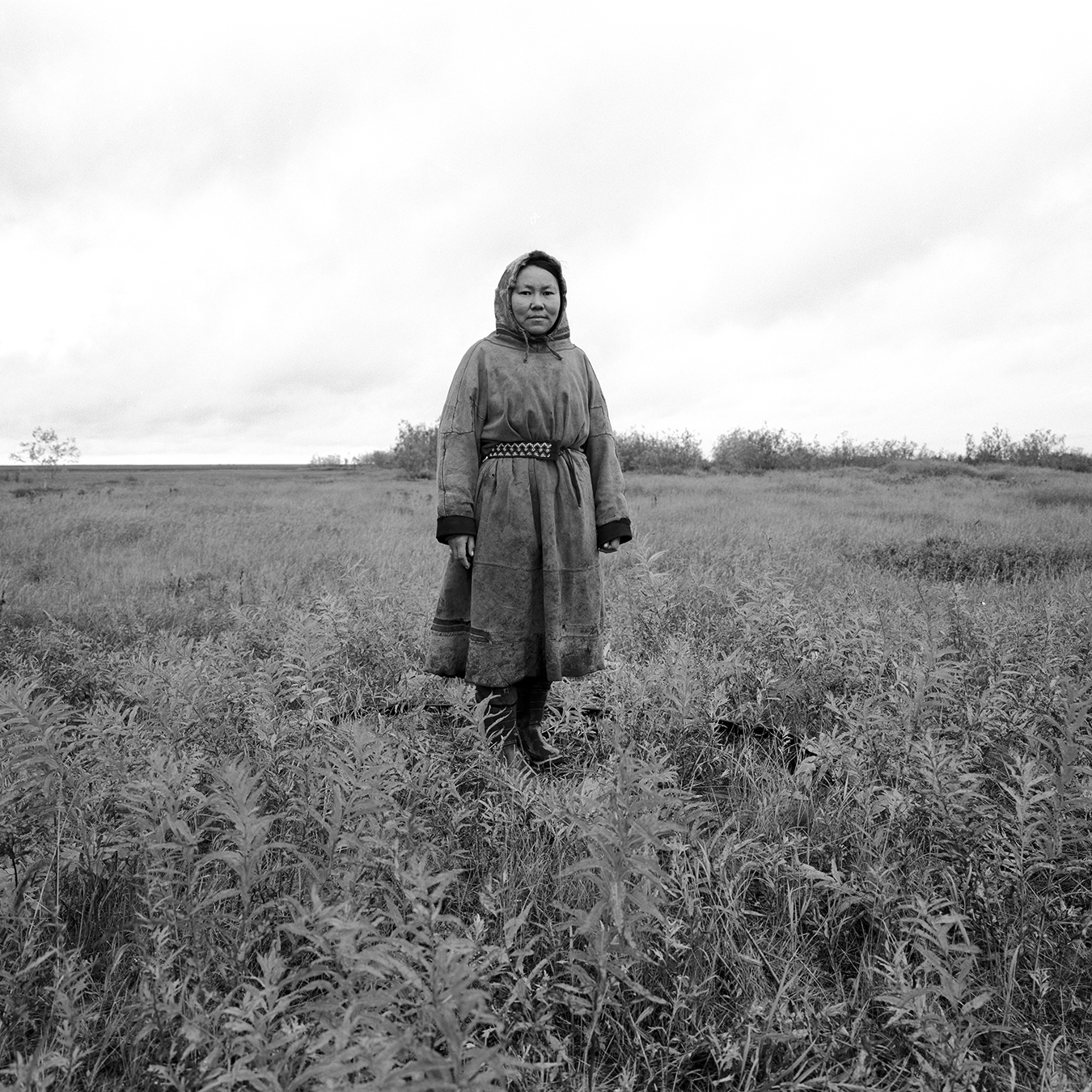
Yamal Nenet Woman
YNAO, Russian Federation
The Nenets, whose name means “human being”, are one of the world’s great reindeer herding peoples. They live in a district (YNAO) 1.5 times the size of France in the North-Western Siberian part of the Russian Federation. With almost a million reindeer, YNAO is the world’s largest area of reindeer husbandry. It is also where 90 percent of Russia’s gas and 12 percent of its oil are produced which has led to a complex relationship with the federal government.
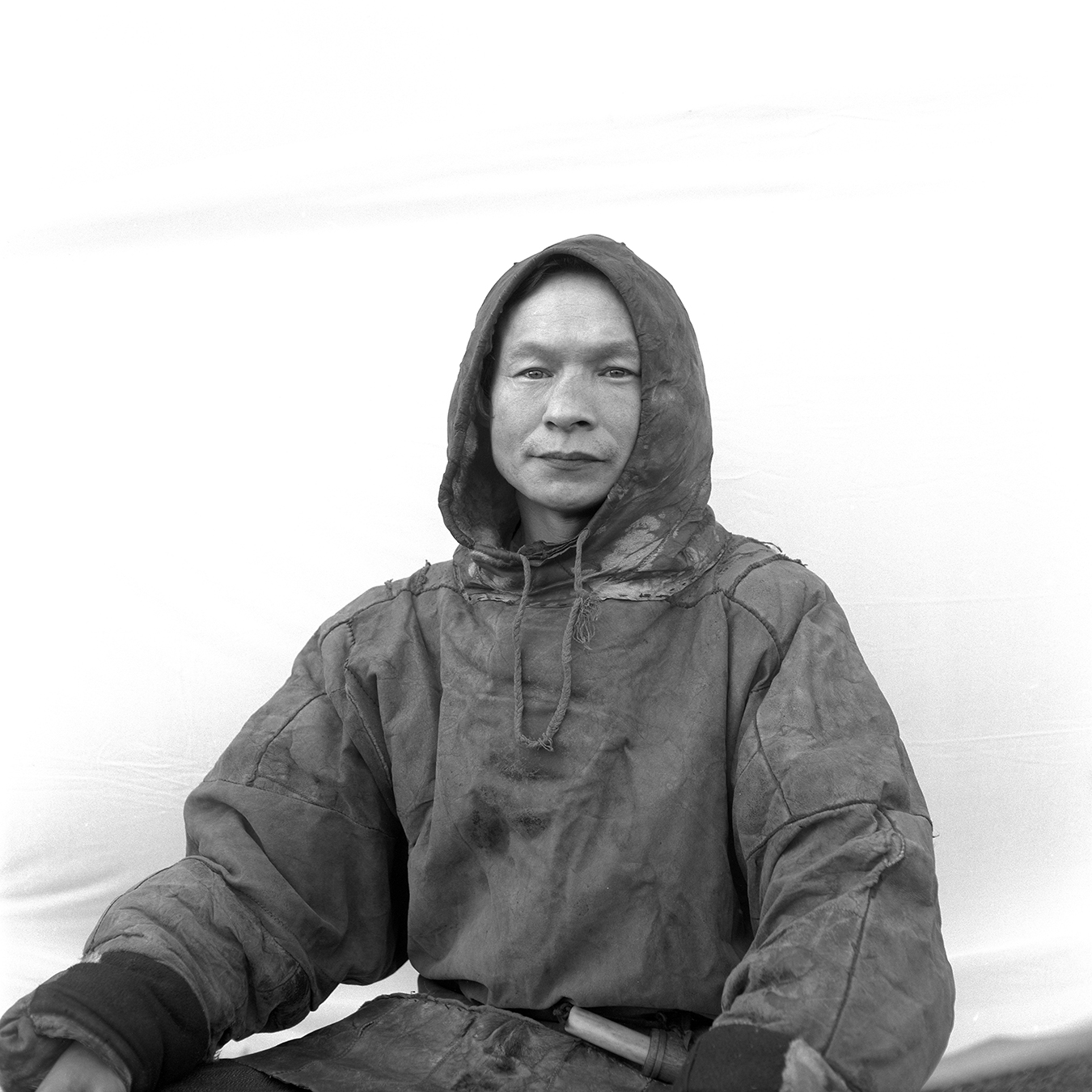
Yamal Nenet Man
YNAO, Russian Federation
The Nenets, whose name means “human being”, are one of the world’s great reindeer herding peoples. They live in a district (YNAO) 1.5 times the size of France in the North-Western Siberian part of the Russian Federation. With almost a million reindeer, YNAO is the world’s largest area of reindeer husbandry. It is also where 90 percent of Russia’s gas and 12 percent of its oil are produced which has led to a complex relationship with the federal government.
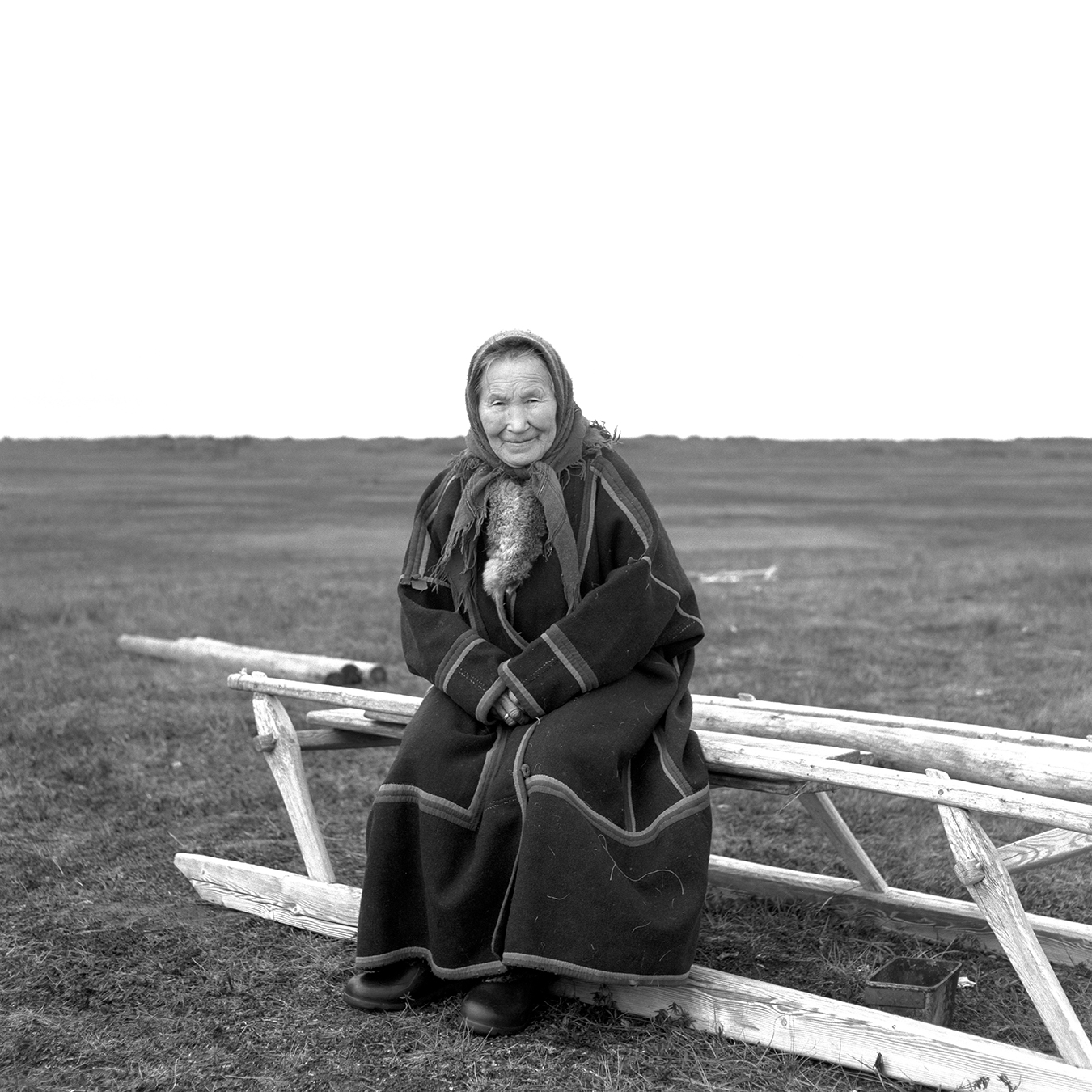
Yamal Nenet Woman
YNAO, Russian Federation
The Nenets, whose name means “human being”, are one of the world’s great reindeer herding peoples. They live in a district (YNAO) 1.5 times the size of France in the North-Western Siberian part of the Russian Federation. With almost a million reindeer, YNAO is the world’s largest area of reindeer husbandry. It is also where 90 percent of Russia’s gas and 12 percent of its oil are produced which has led to a complex relationship with the federal government.
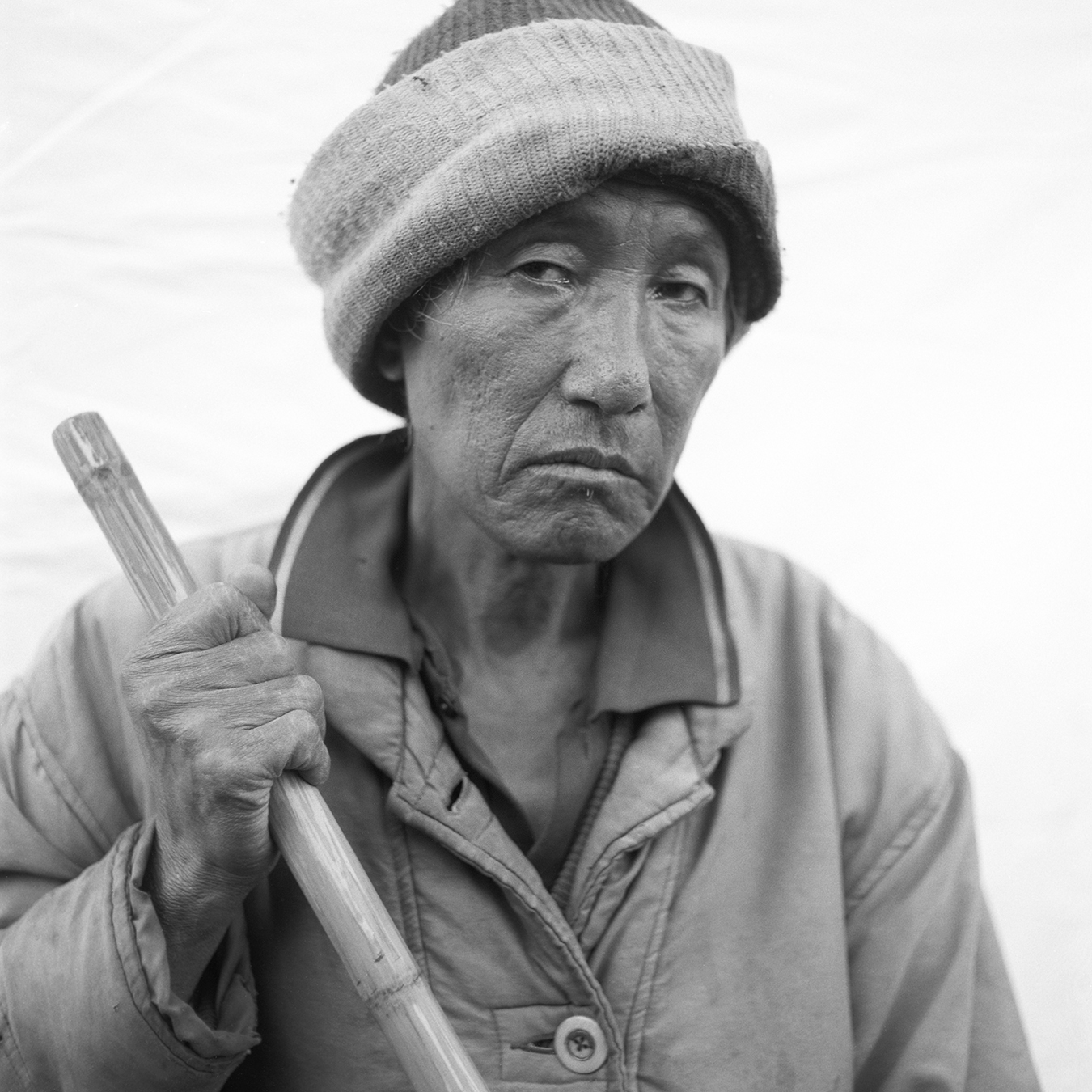
Apatani Man
Arunachal Pradesh, North East India
The Apatani live in seven large, compact villages in a highland valley at an altitude of between 0.9 - 1.7 mi / 1,500-2,700 m in the Lower Subansiri district. They are self-sufficient sedentary farmers and practice a highly evolved Indigenous system of wet rice and fish cultivation. Their farming system is managed collectively by informal groups of men and women, each tasked with specific responsibilities and workloads. The Apatani are also known for their extensive knowledge and use of 158 different medicinal plants and their skills as craftspeople.
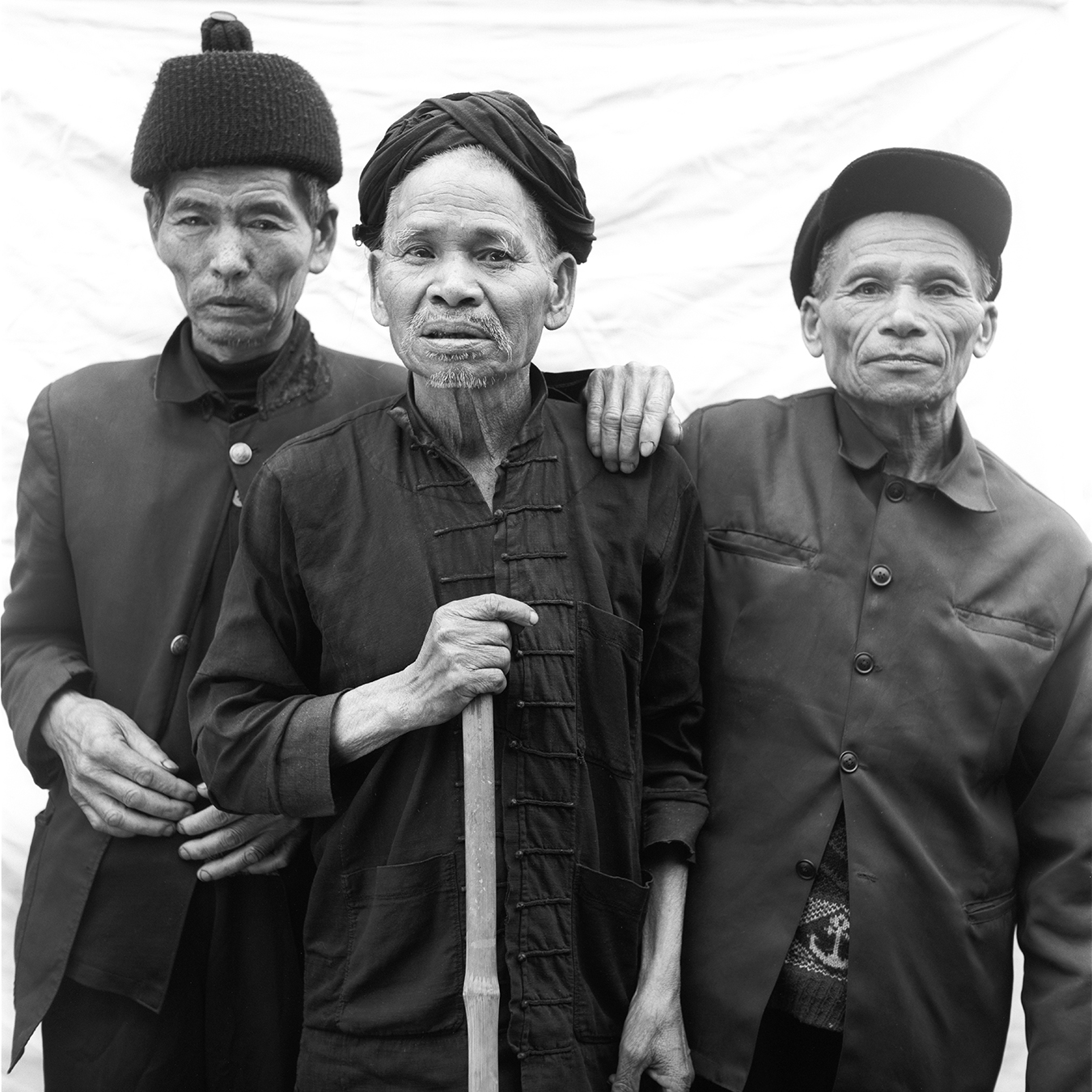
Yao Men
Yunnan province, People’s Republic of China
The Yao of Yunnan (est. pop. 191,000) are part of the 2.7 million Yao living in China. Yao refers to several distinct minority groups who in 1949 were grouped by the Chinese government under one name. The Yao speak different languages, have different customs and lifestyles and are represented in the local People’s Congress. Autonomy, however, does not mean self-determination. The Yao have experienced little development and some of the highest poverty rates are found in the regions where they live.

Two Yao children
Yunnan province, People’s Republic of China
The Yao of Yunnan (est. pop. 191,000) are part of the 2.7 million Yao living in China. Yao refers to several distinct minority groups who in 1949 were grouped by the Chinese government under one name. The Yao speak different languages, have different customs and lifestyles and are represented in the local People’s Congress. Autonomy, however, does not mean self-determination. The Yao have experienced little development and some of the highest poverty rates are found in the regions where they live.
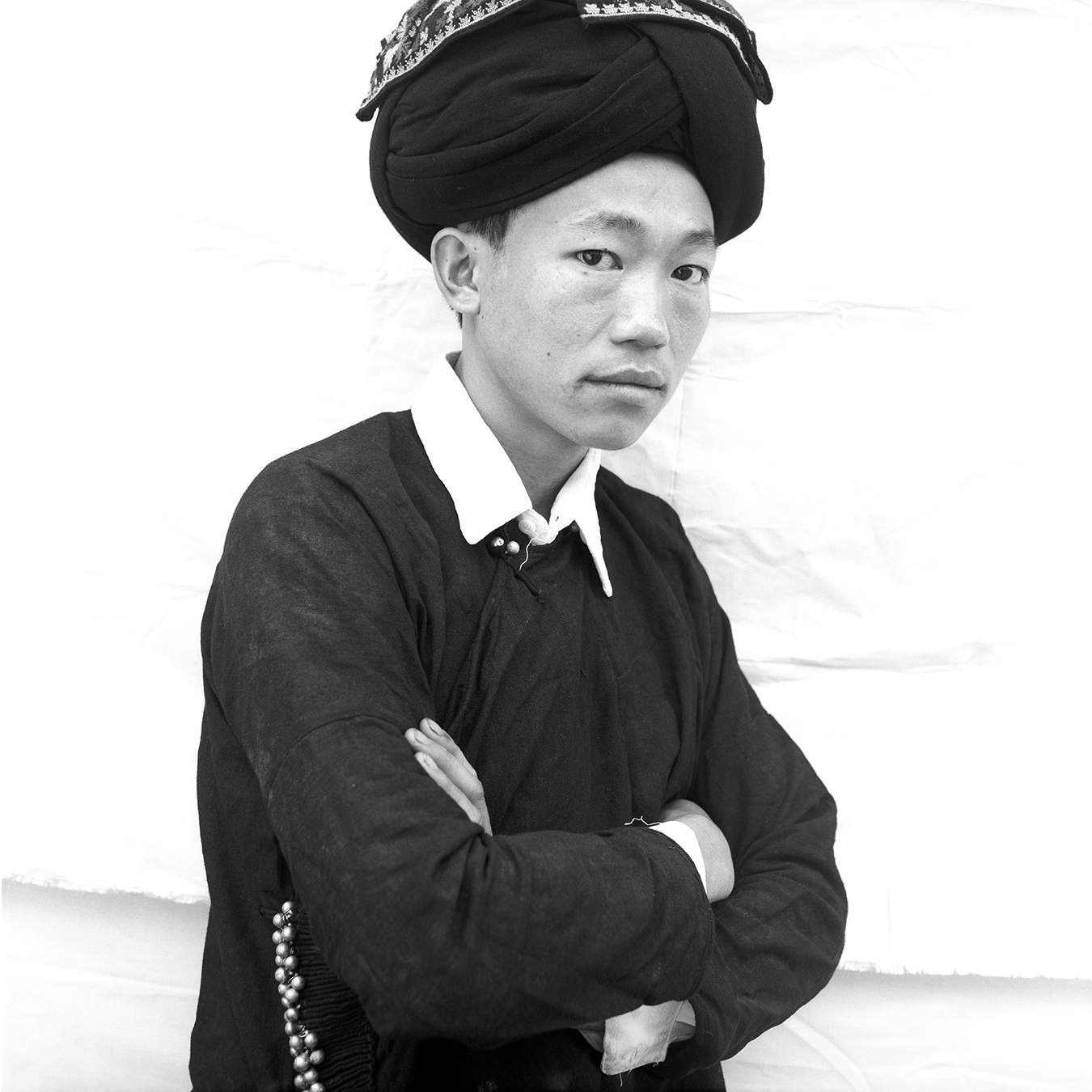
Yao Man
Yunnan province, People’s Republic of China
The Yao of Yunnan (est. pop. 191,000) are part of the 2.7 million Yao living in China. Yao refers to several distinct minority groups who in 1949 were grouped by the Chinese government under one name. The Yao speak different languages, have different customs and lifestyles and are represented in the local People’s Congress. Autonomy, however, does not mean self-determination. The Yao have experienced little development and some of the highest poverty rates are found in the regions where they live.
About the photographer
Christoph Lingg studied at the International Centre of Photography, New York City, USA. After completing his studies in 1988, he has worked as freelance photographer and produced numerous exhibitions in Austria and around the world. These photos selected from “By the world forgot” highlight the Kalasha, Yao, Apatani, Dani, Nenets and Hani peoples. Subjects were asked to stand in front of a white background or in their own accustomed environment.
This exhibit was launched in April 2021
